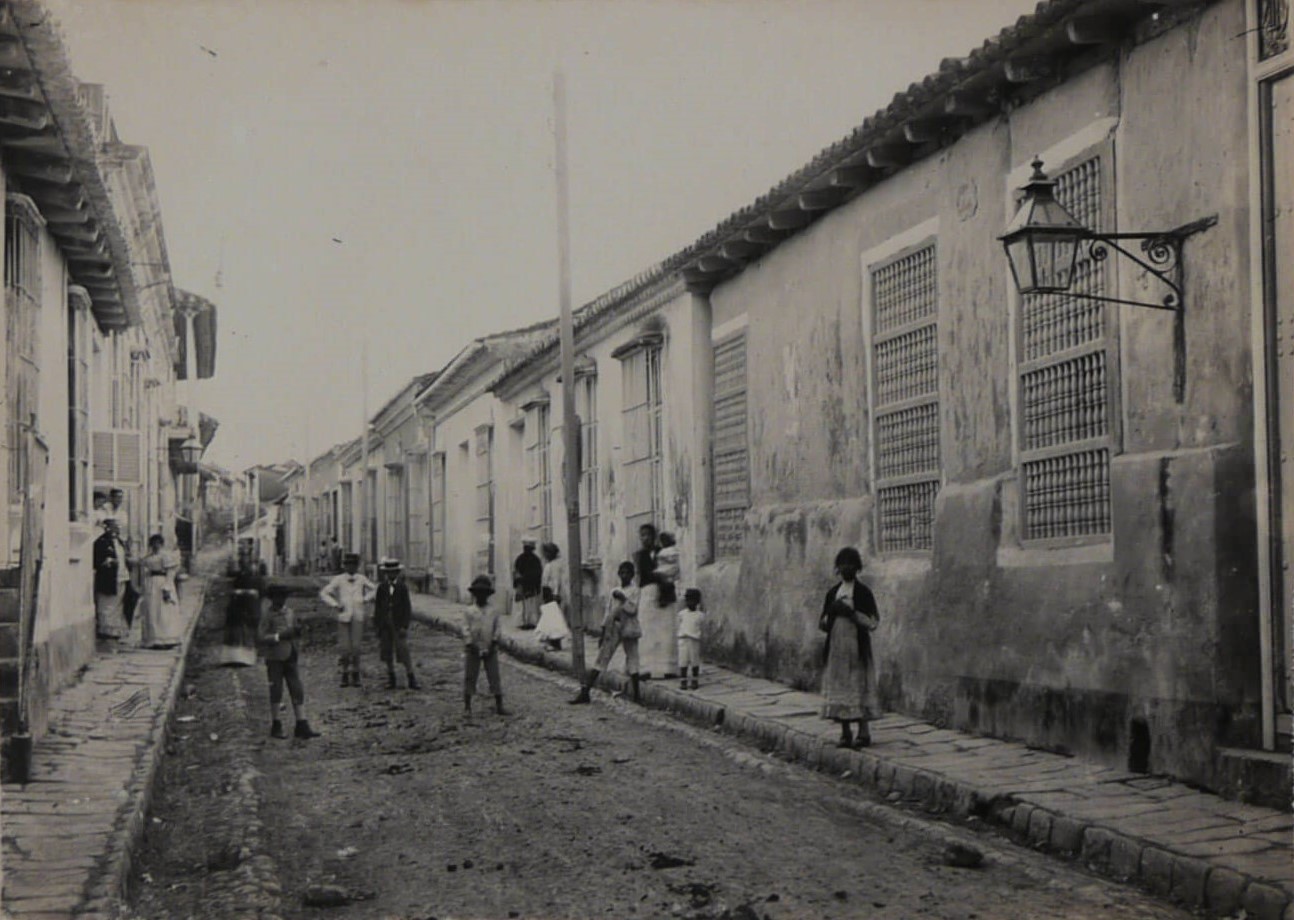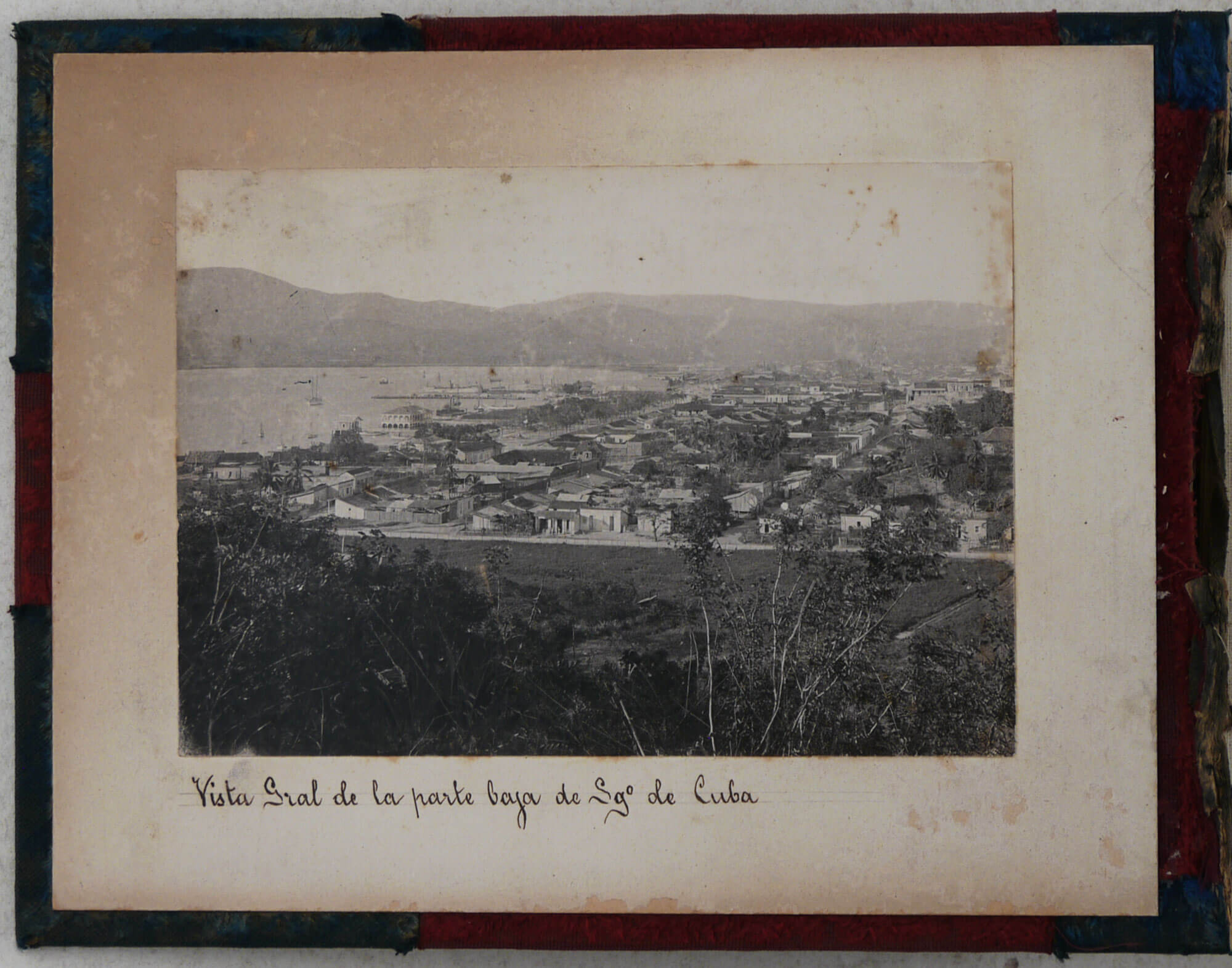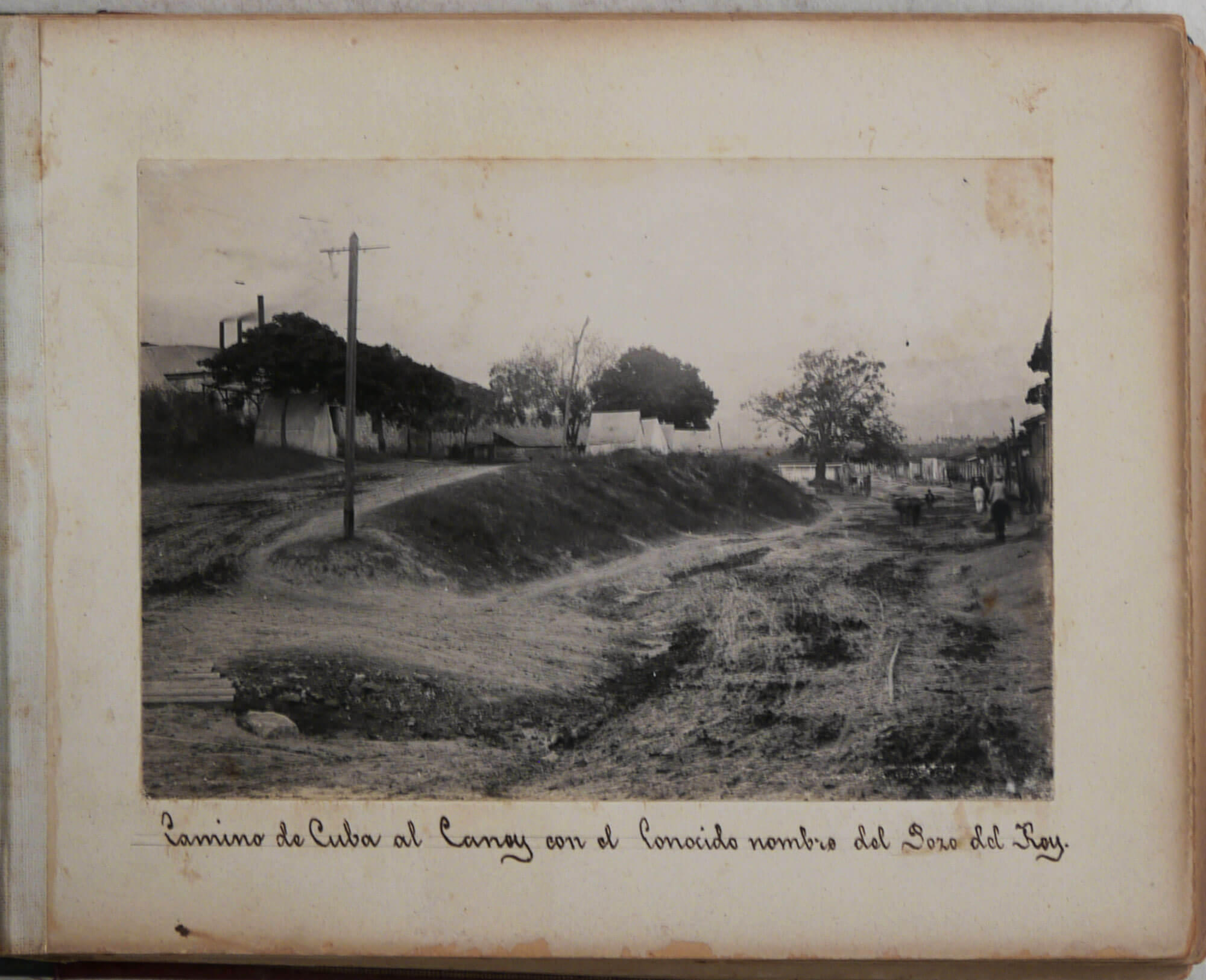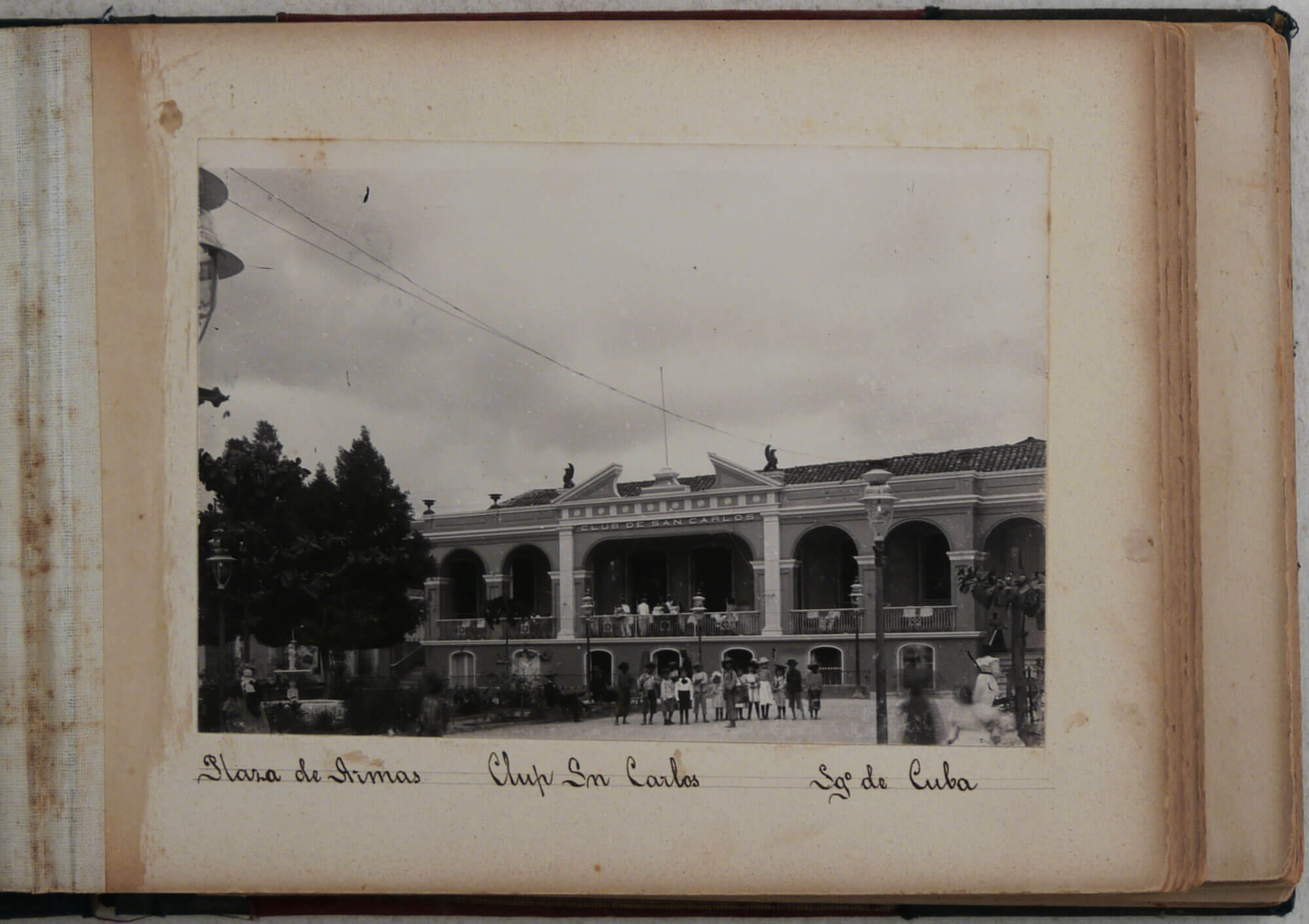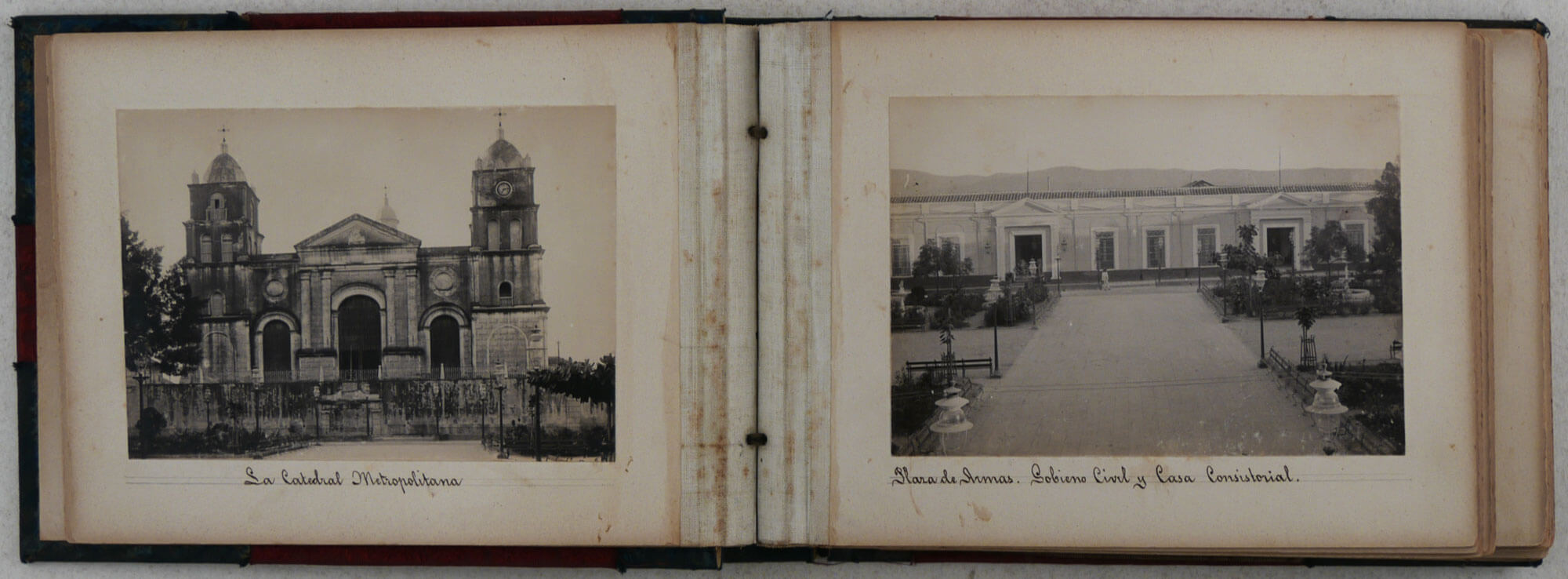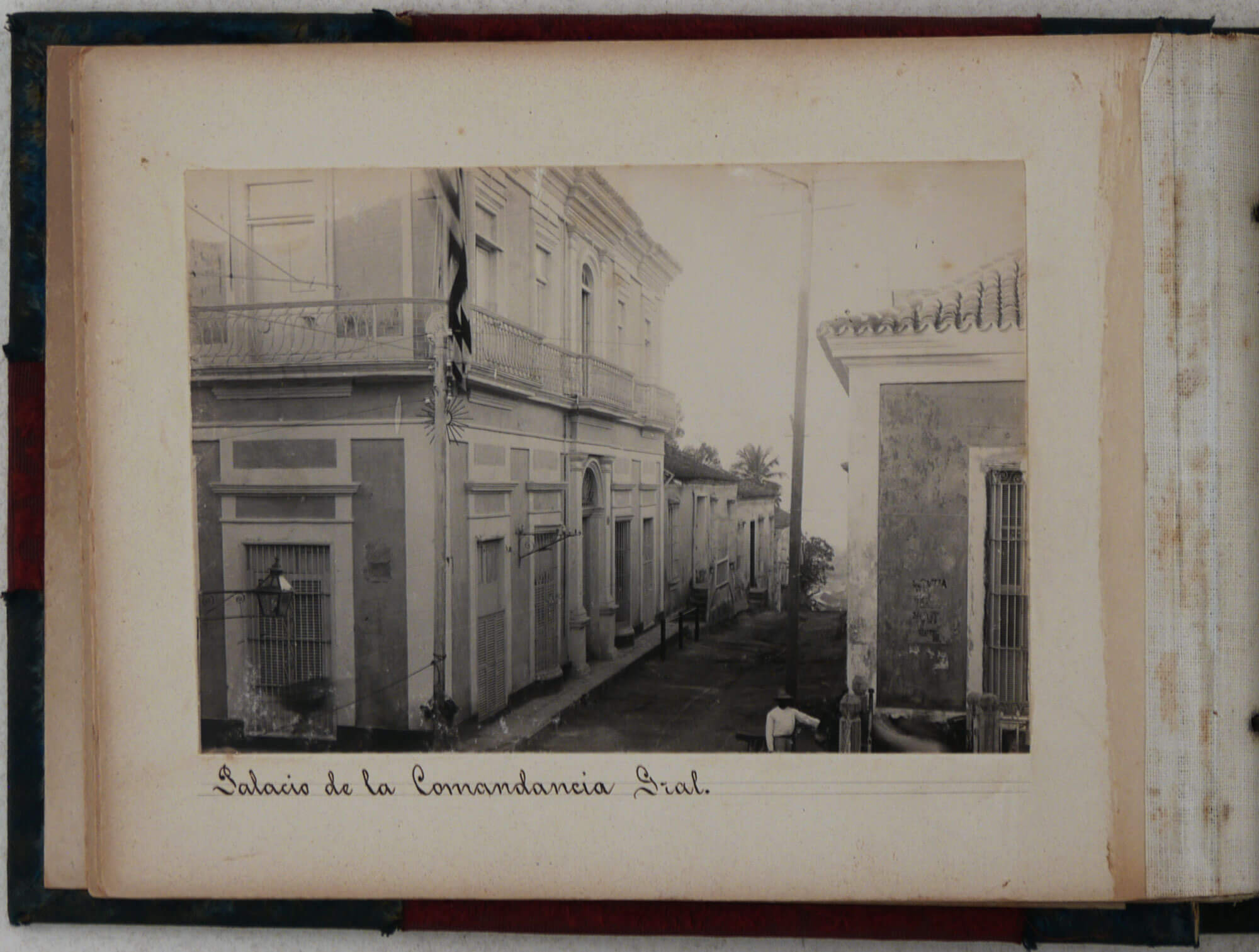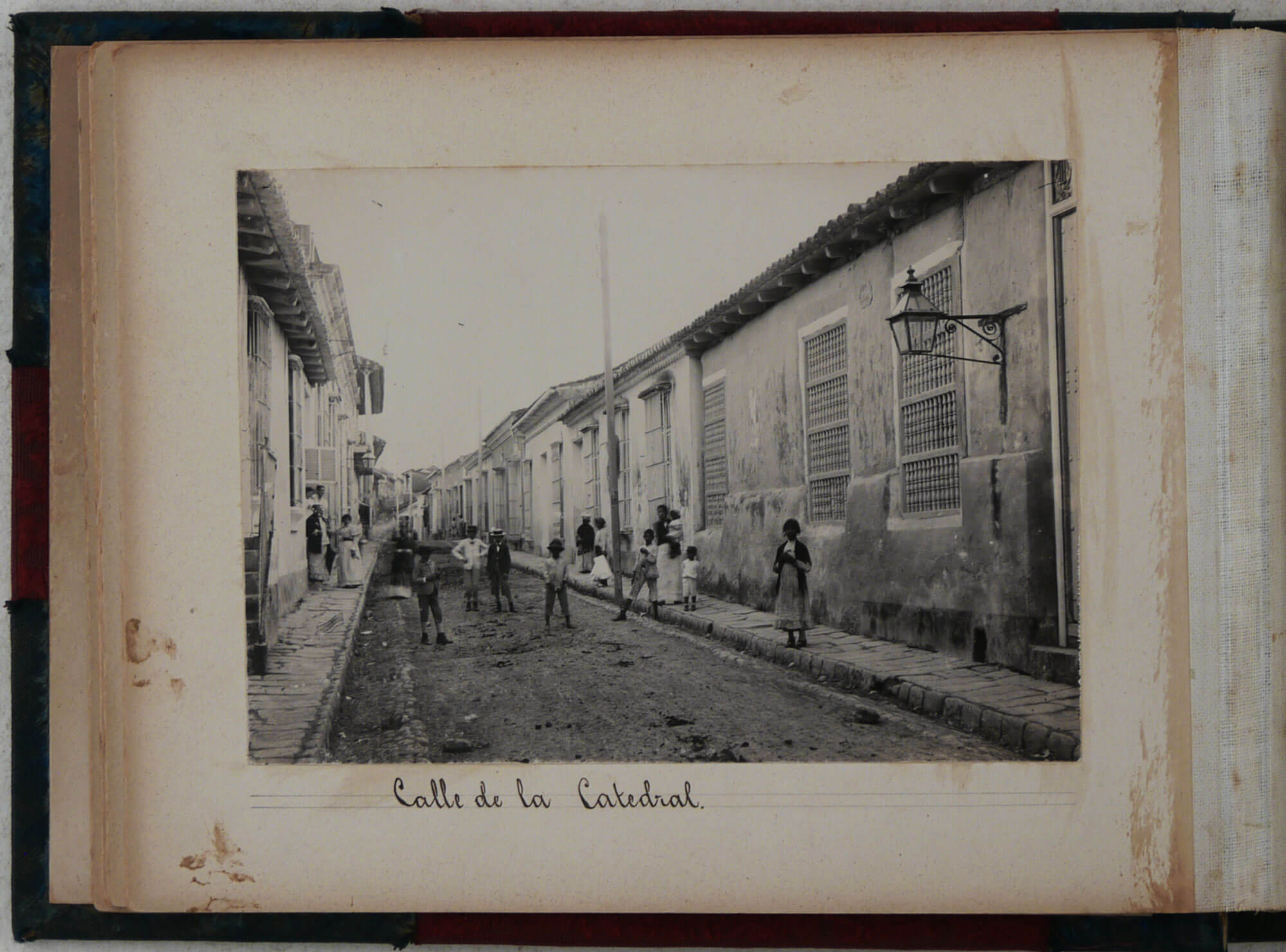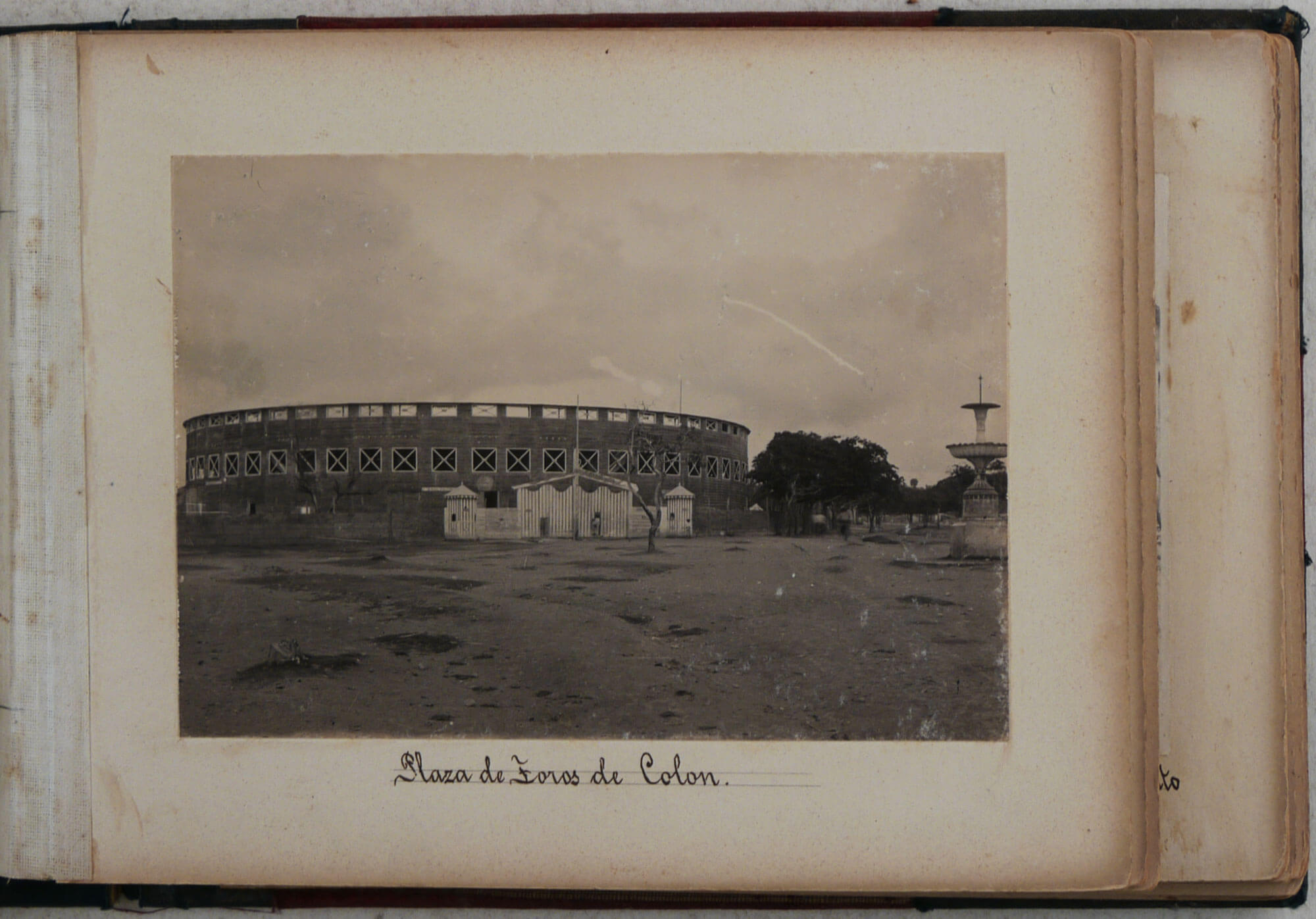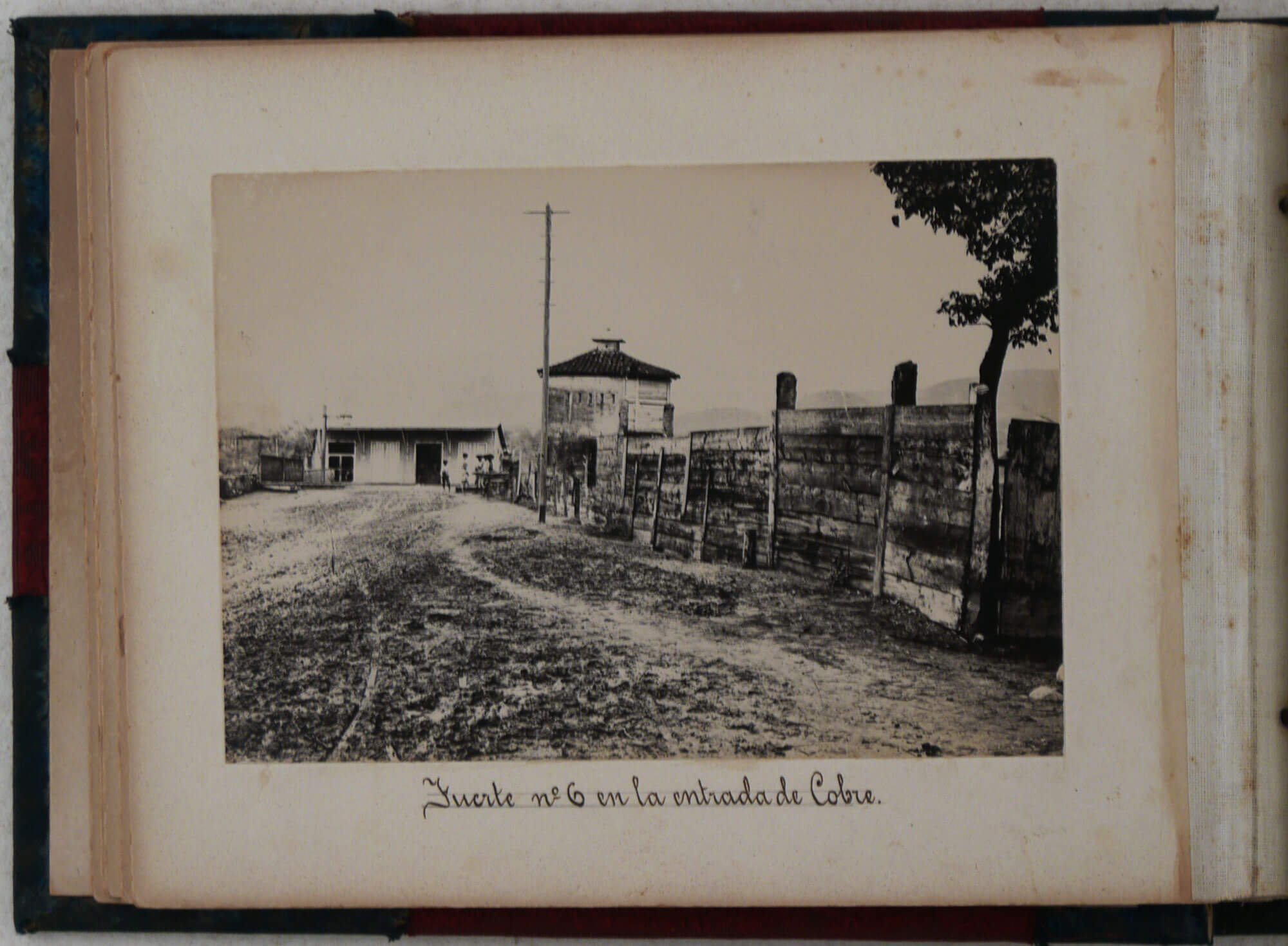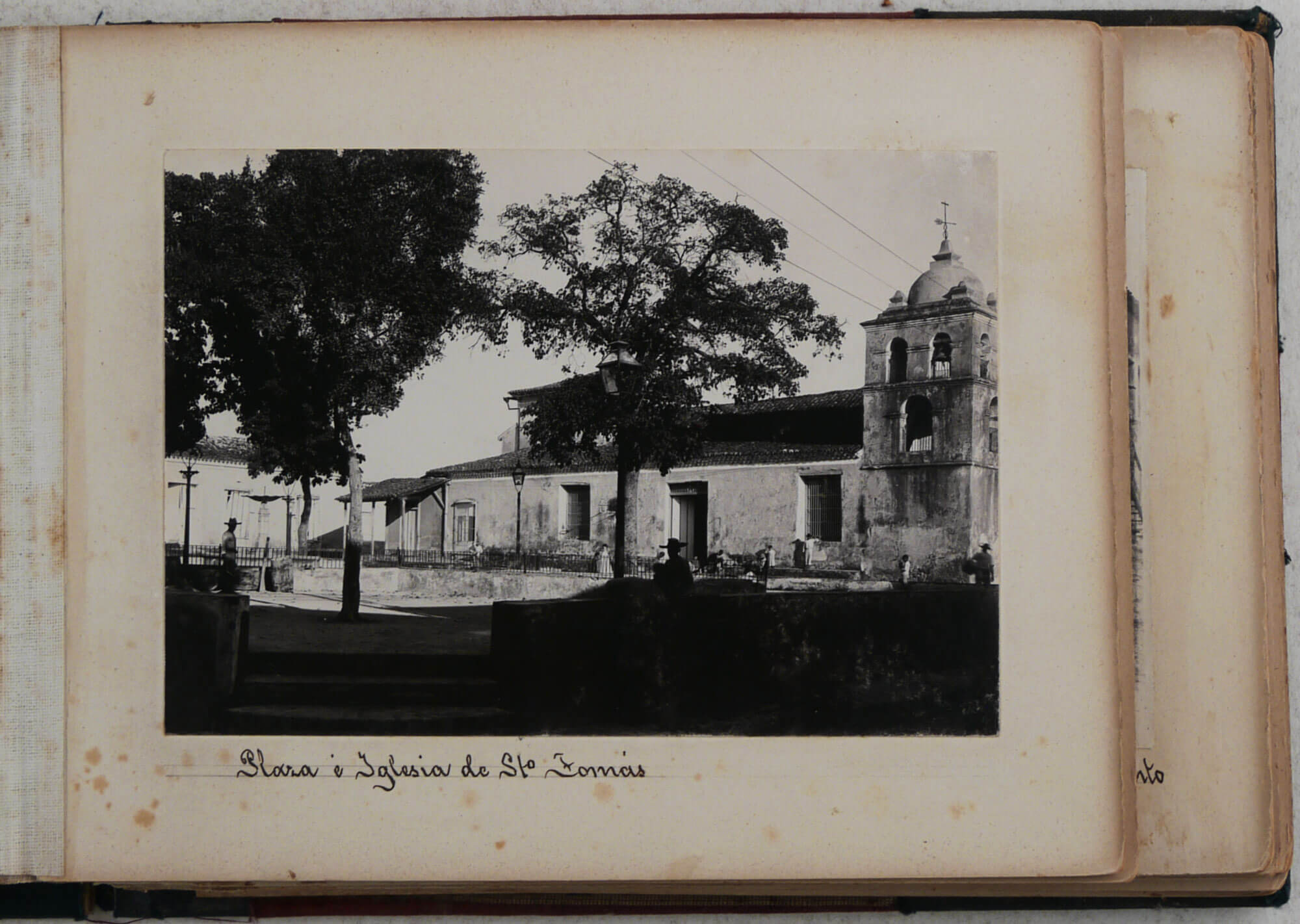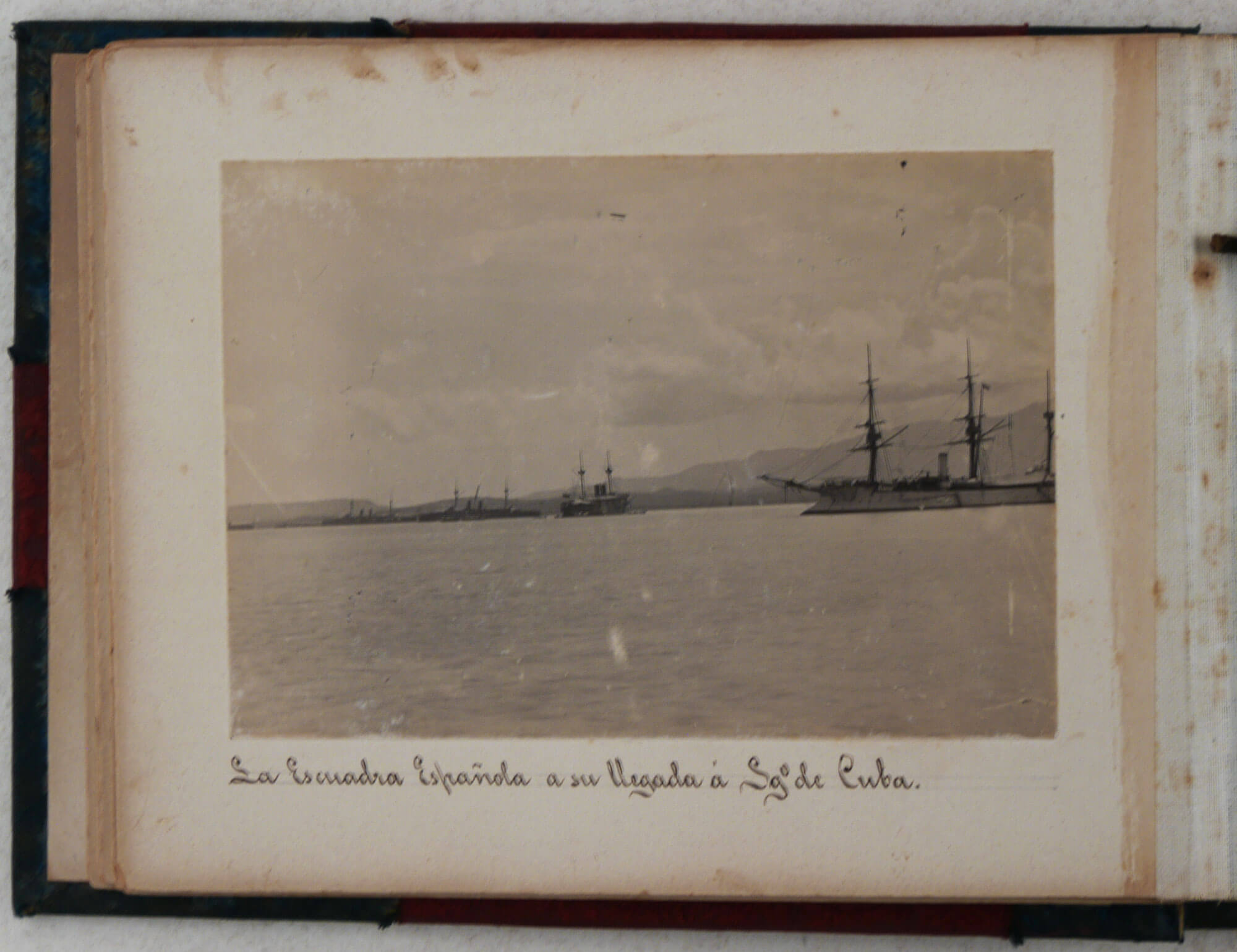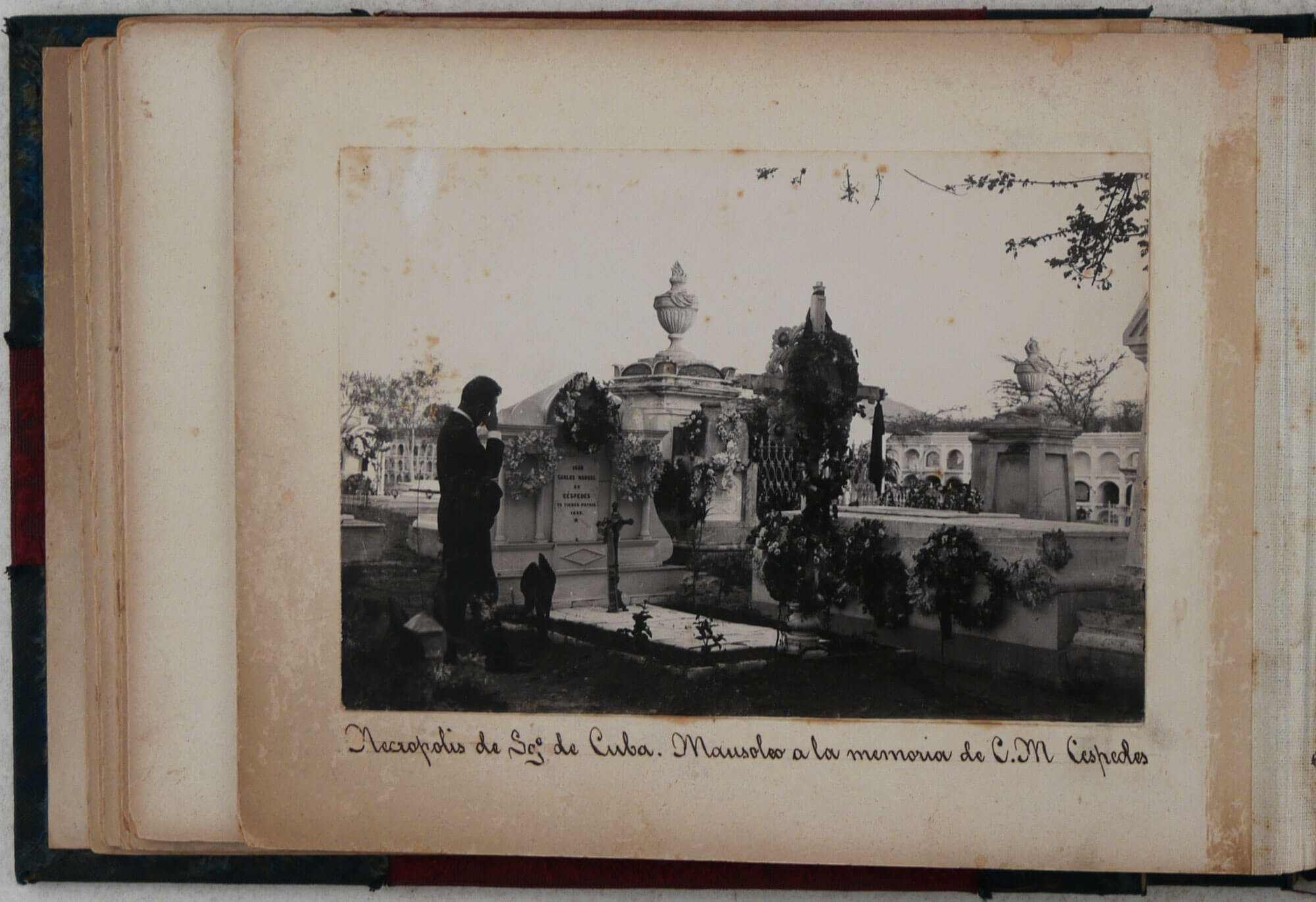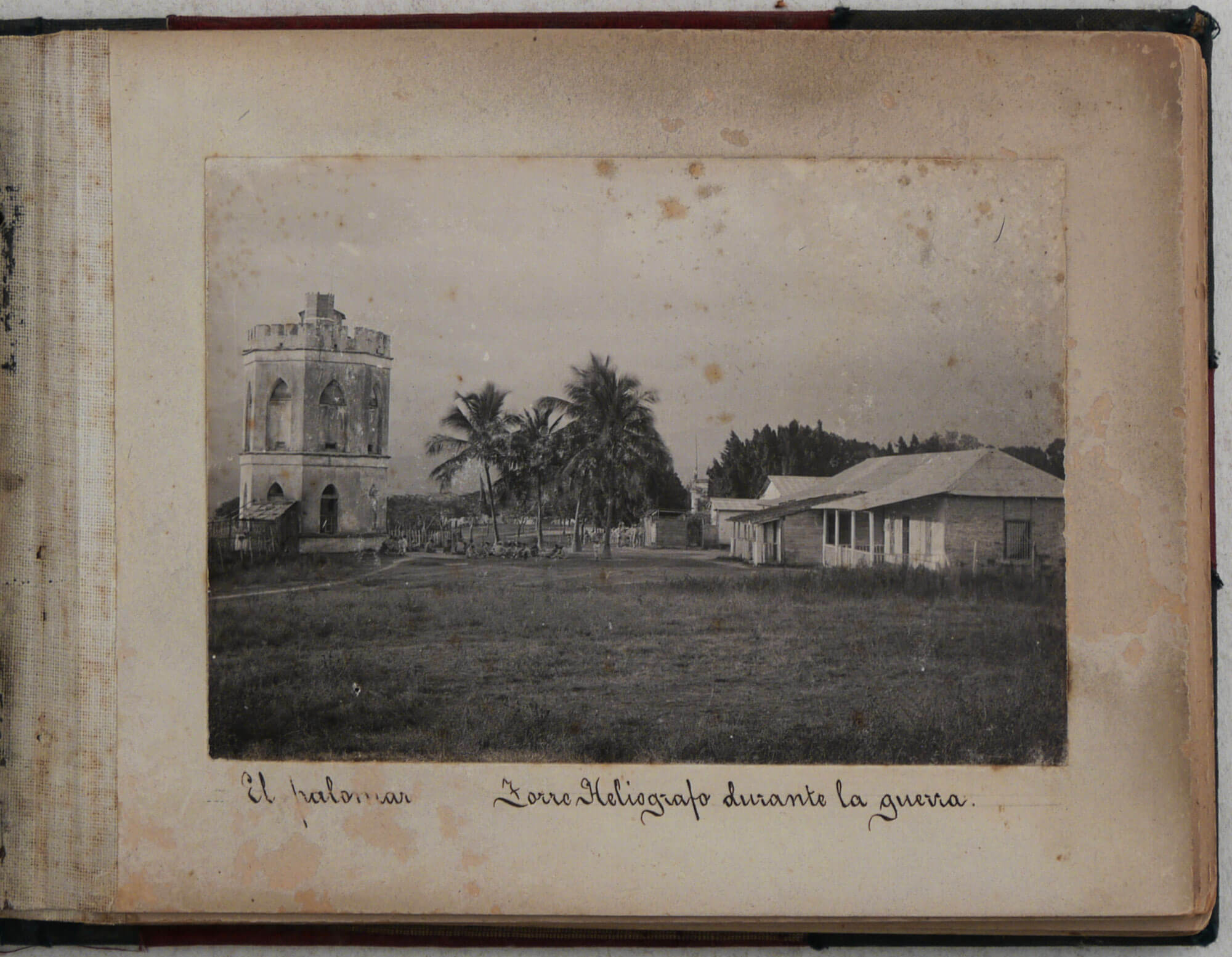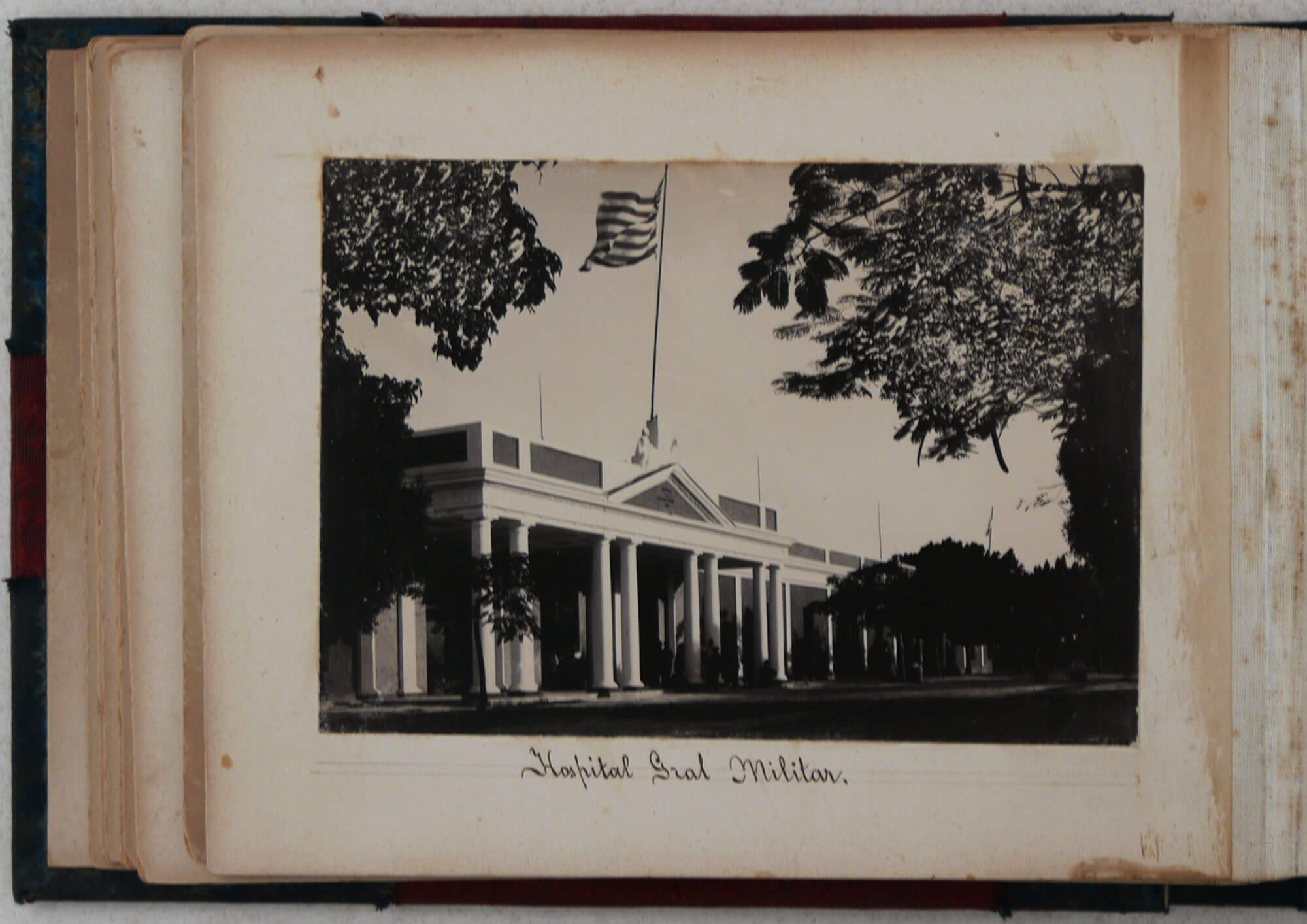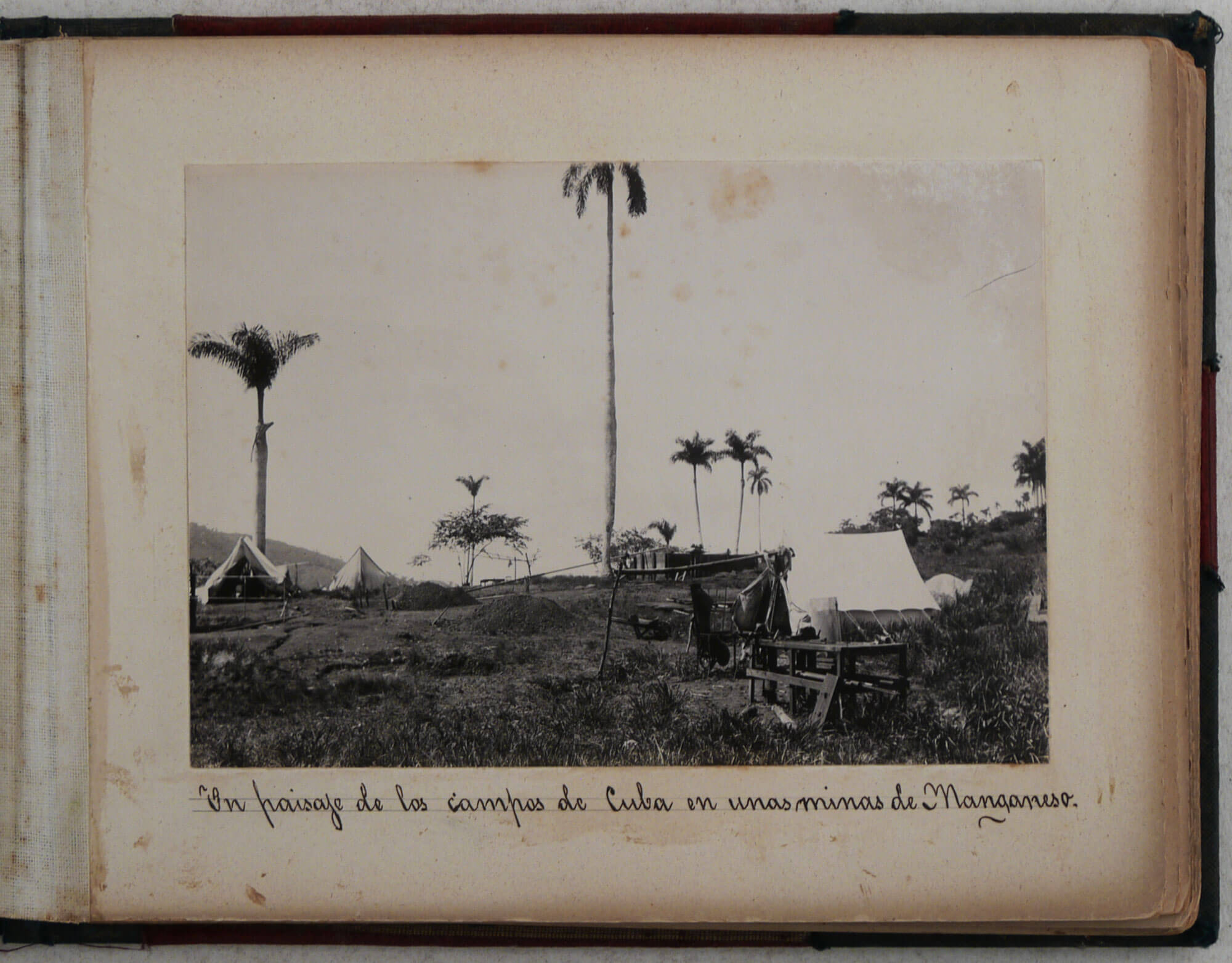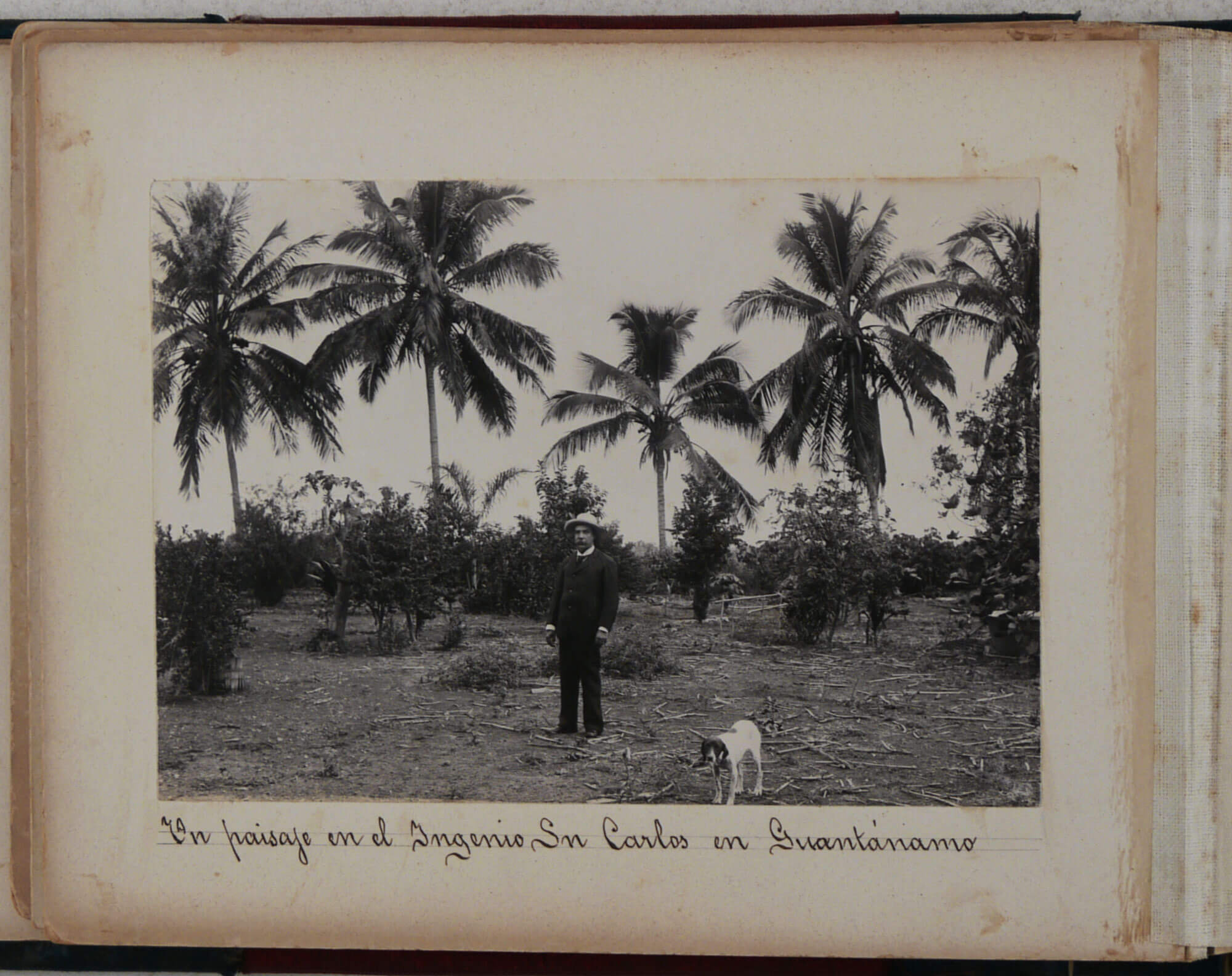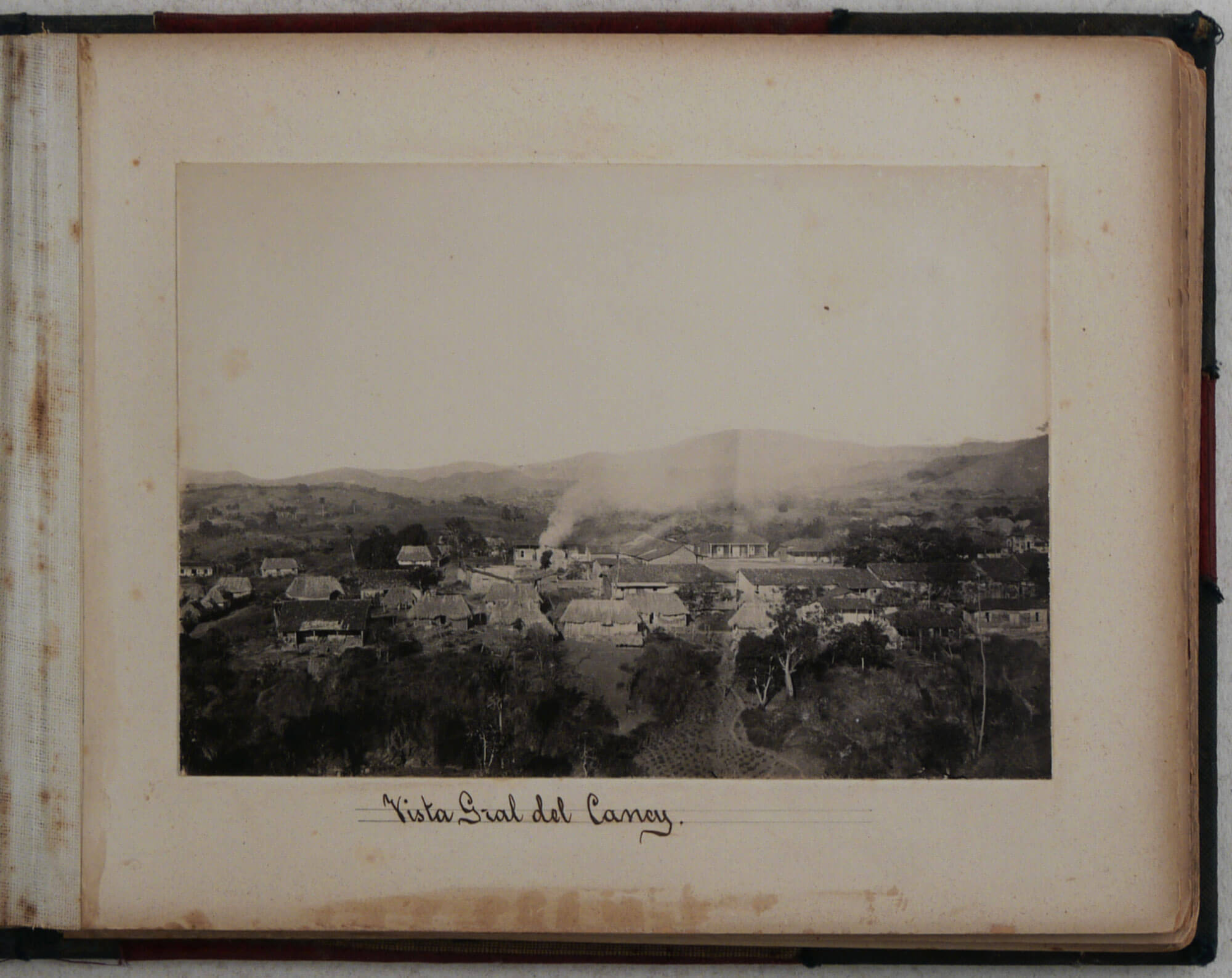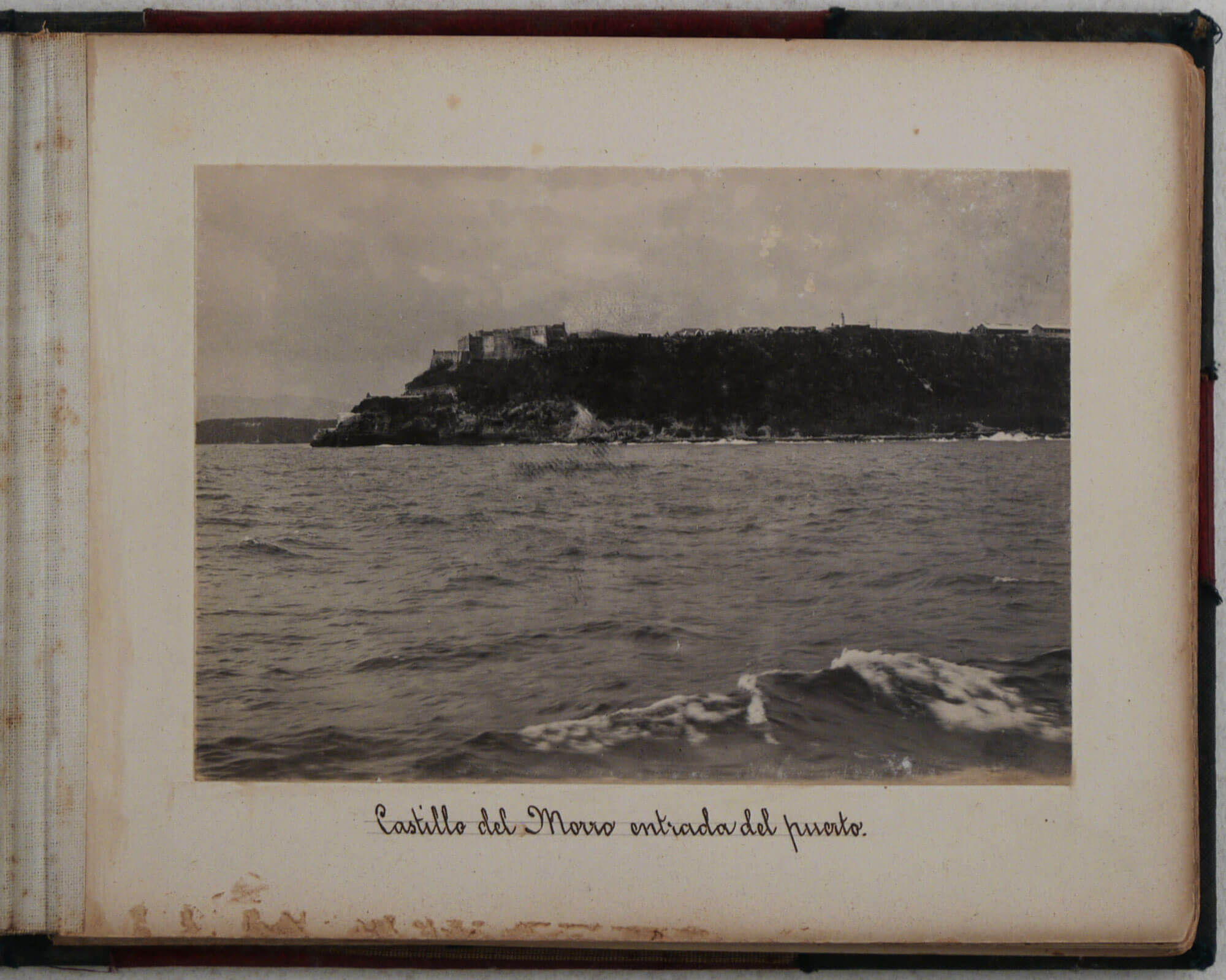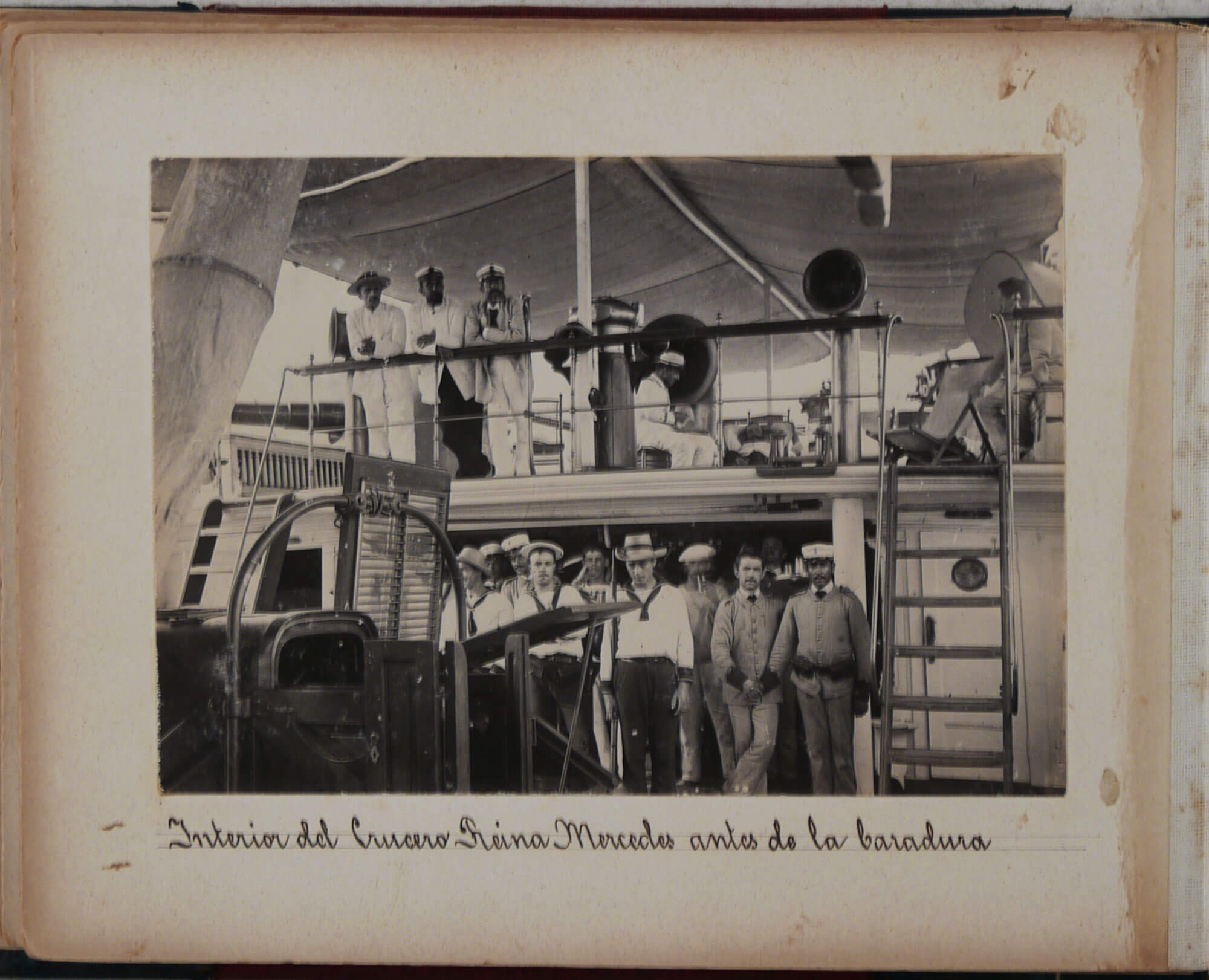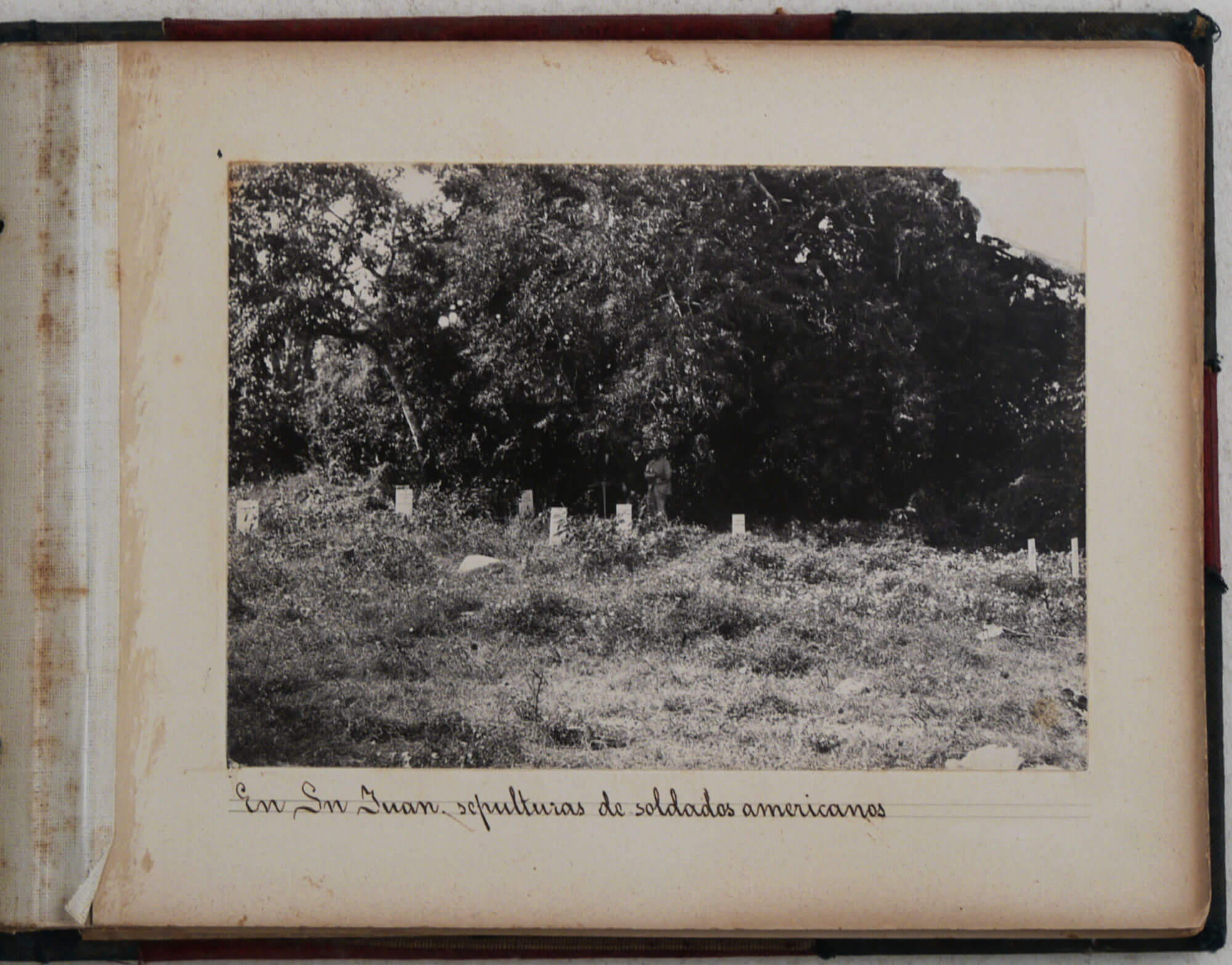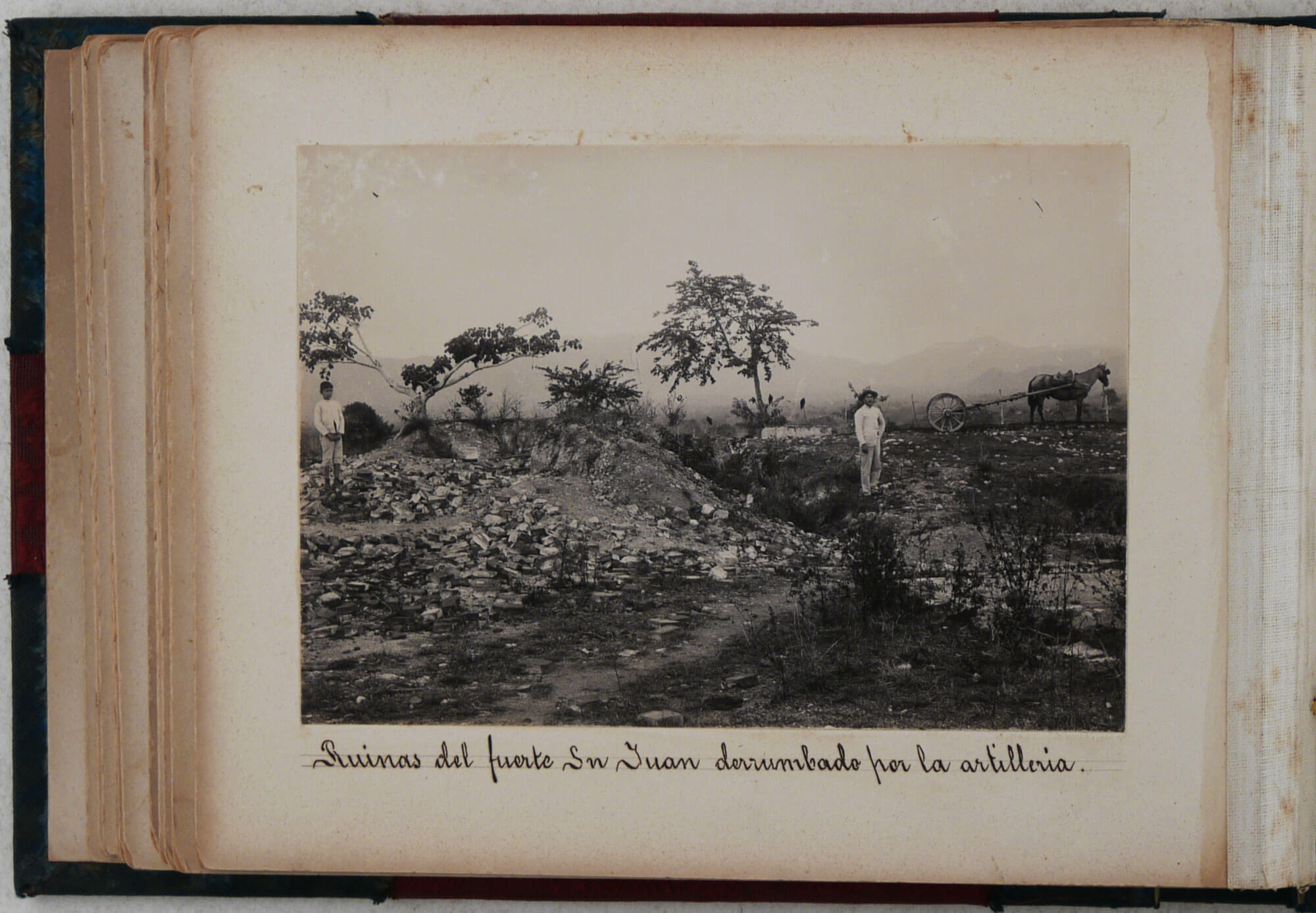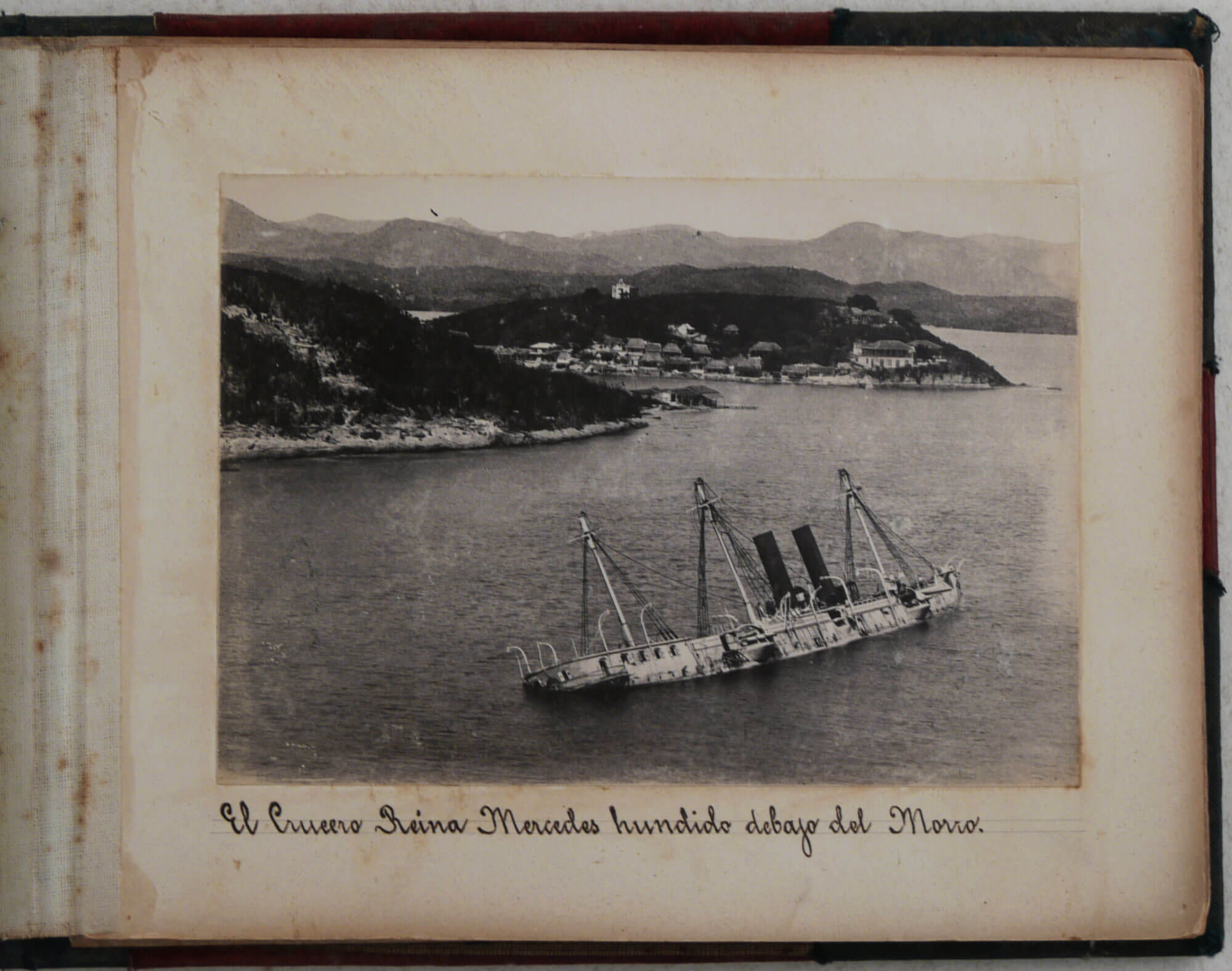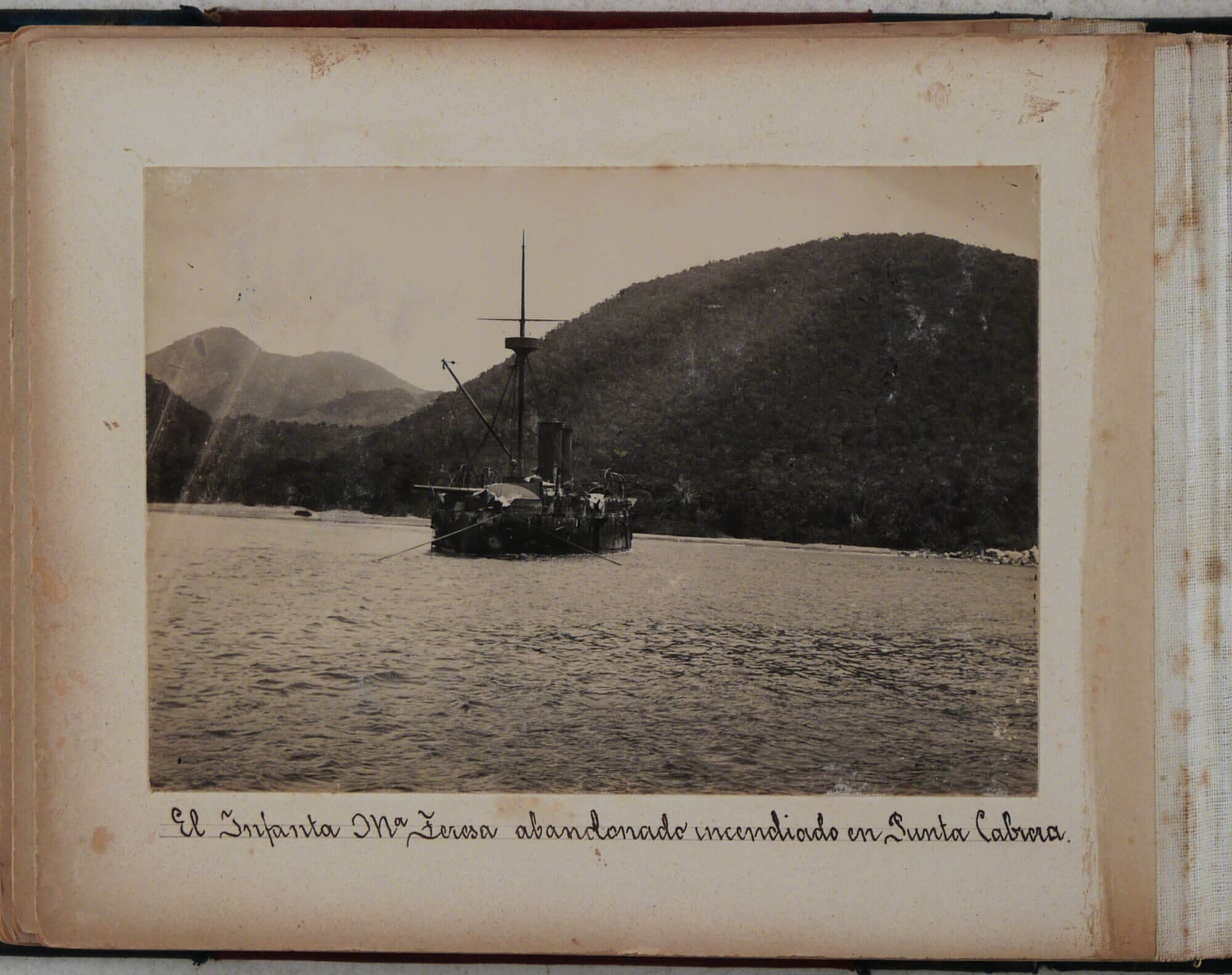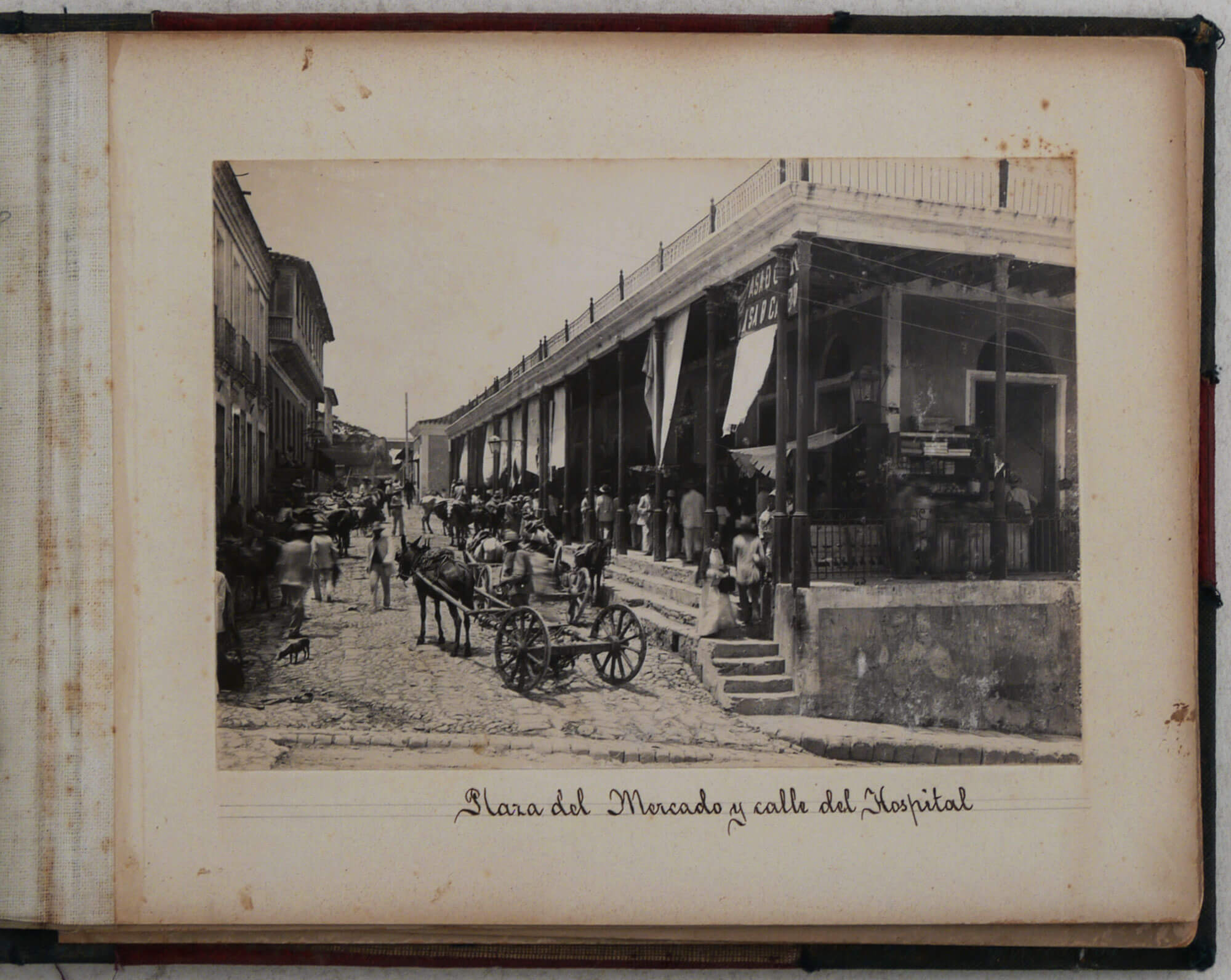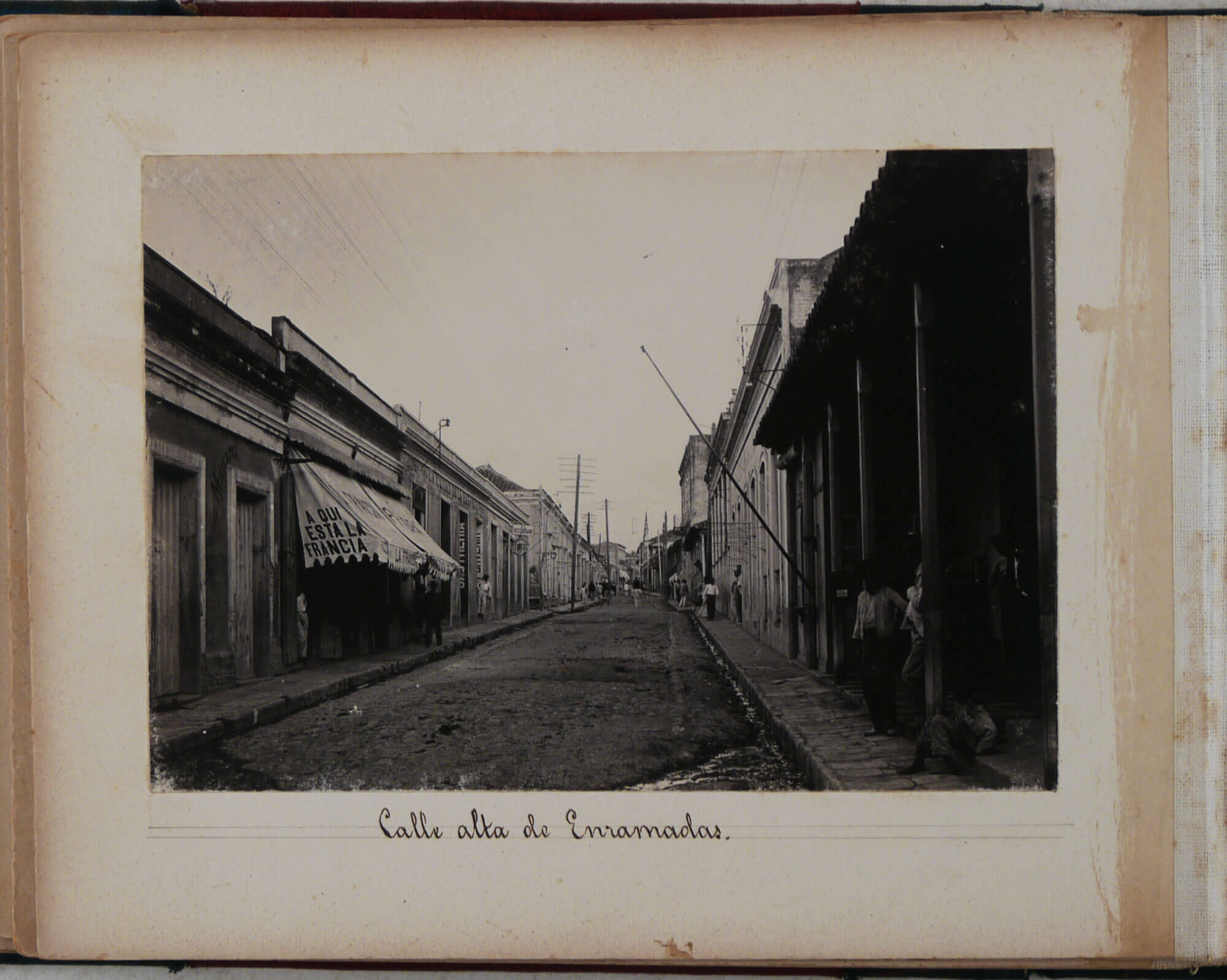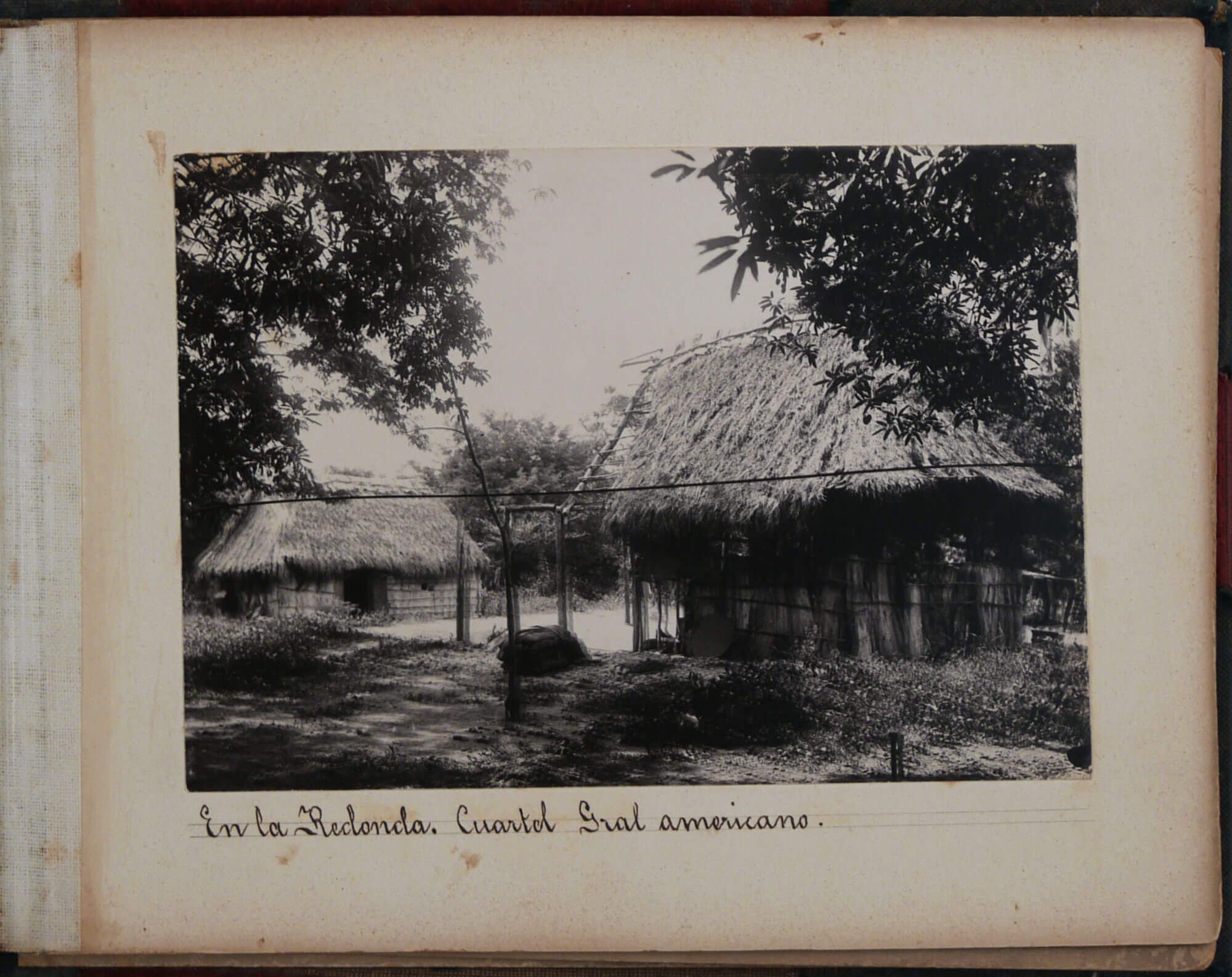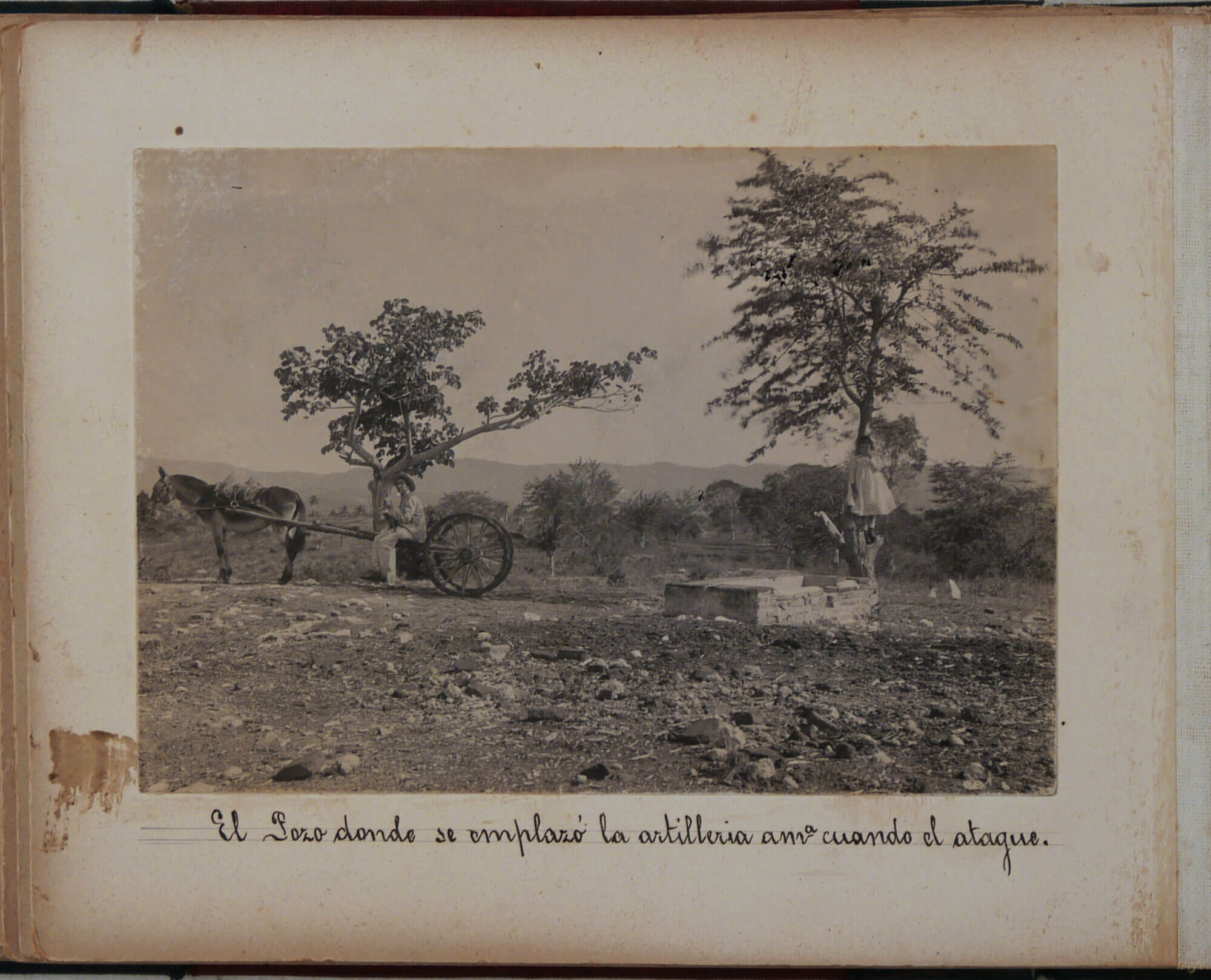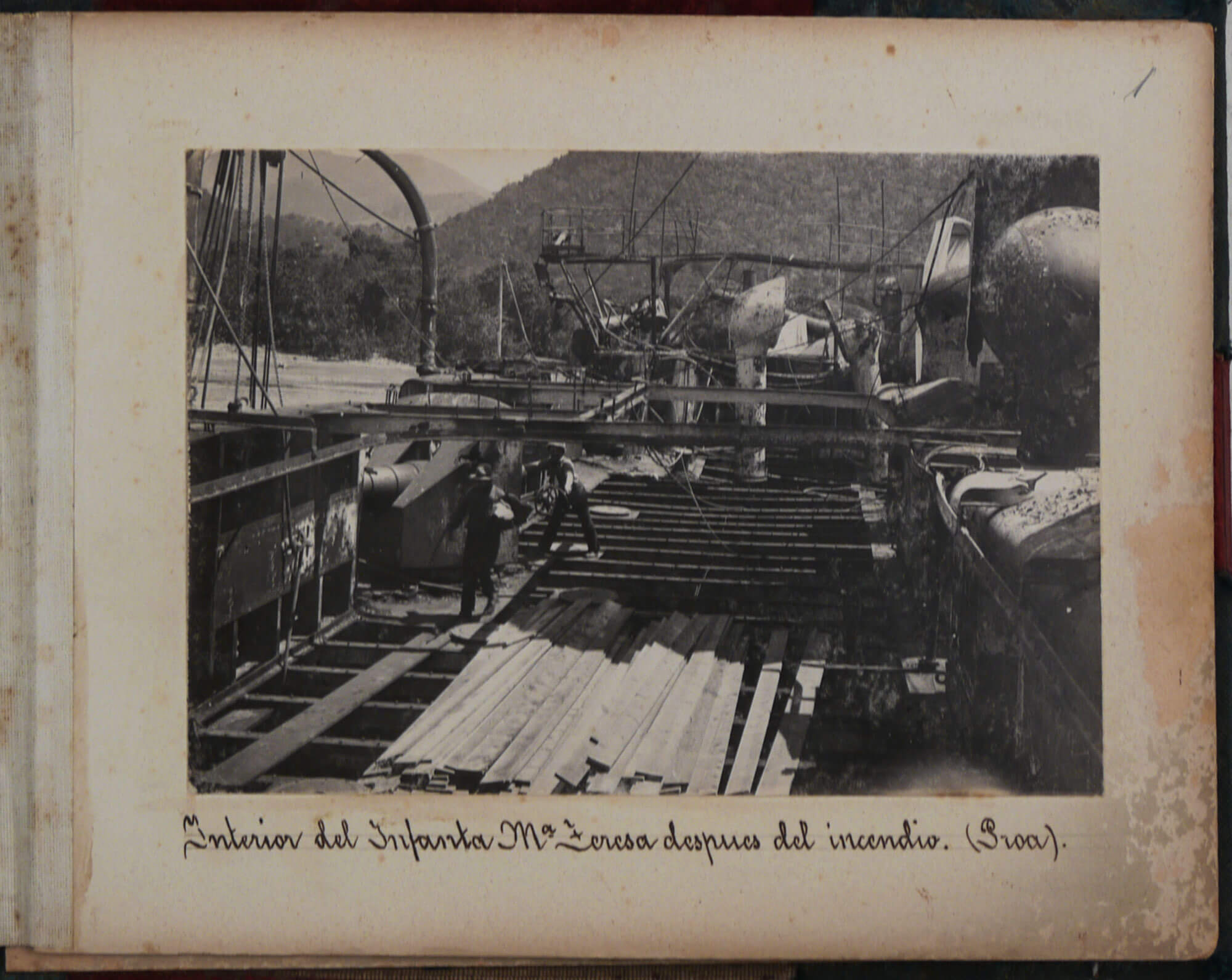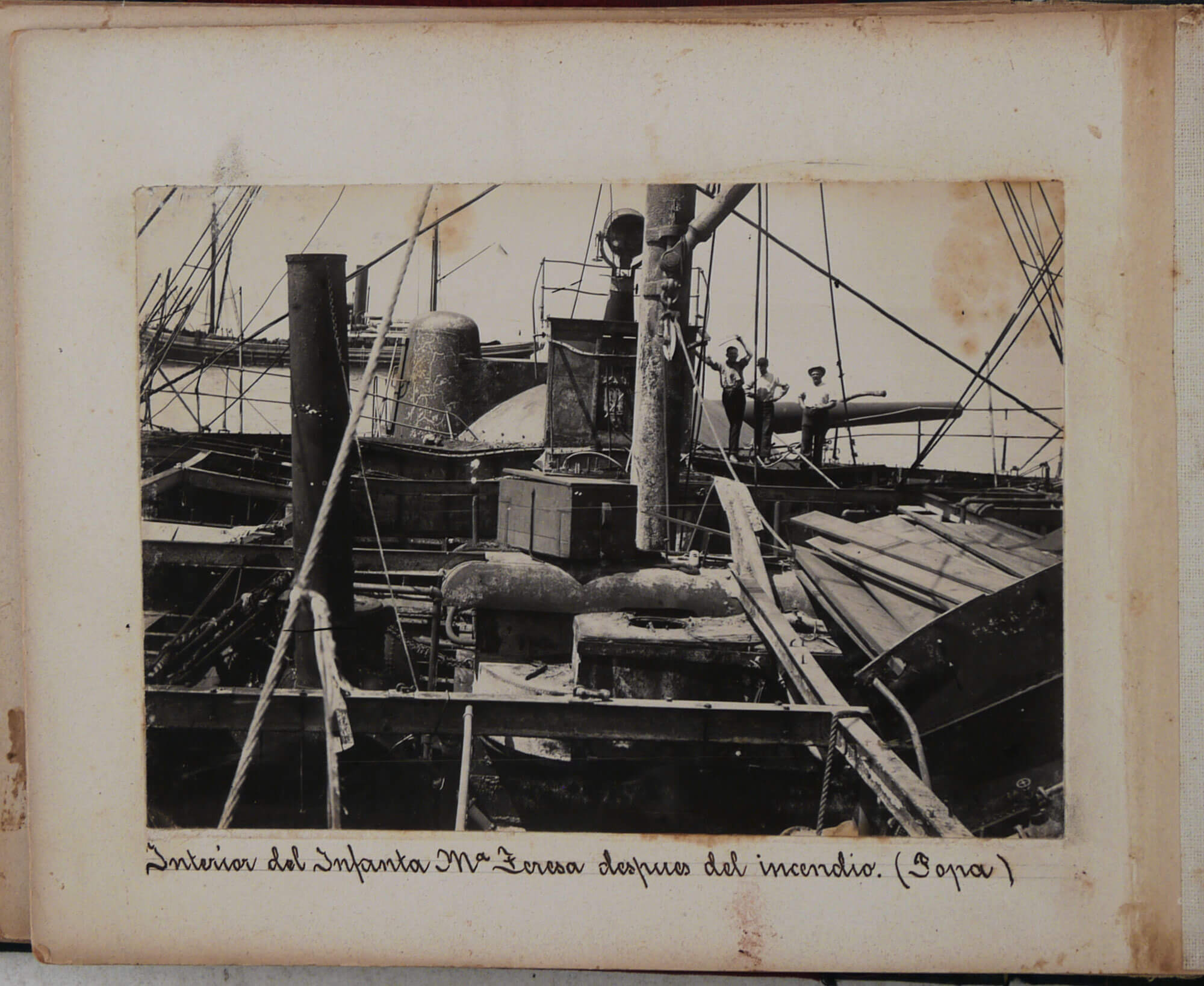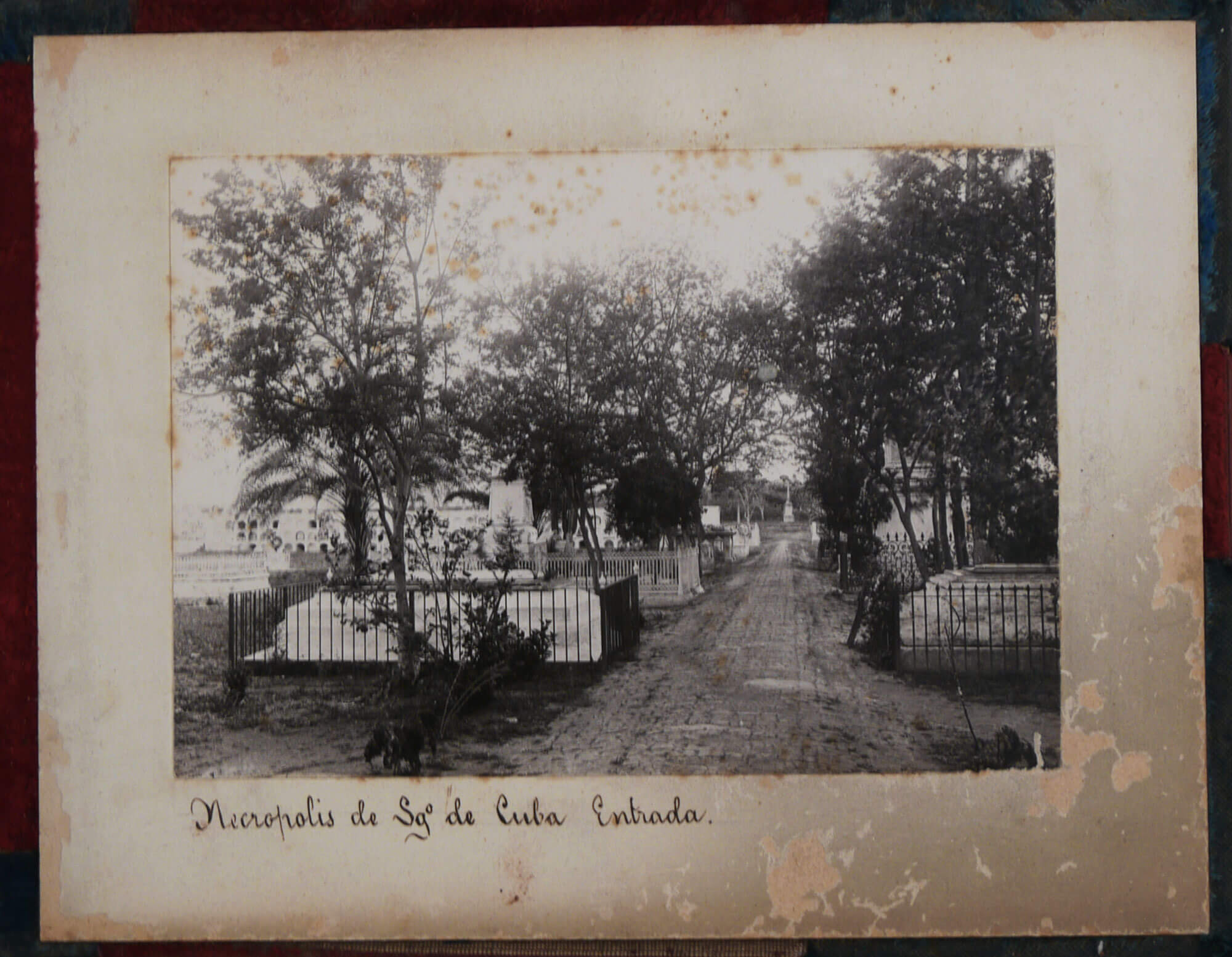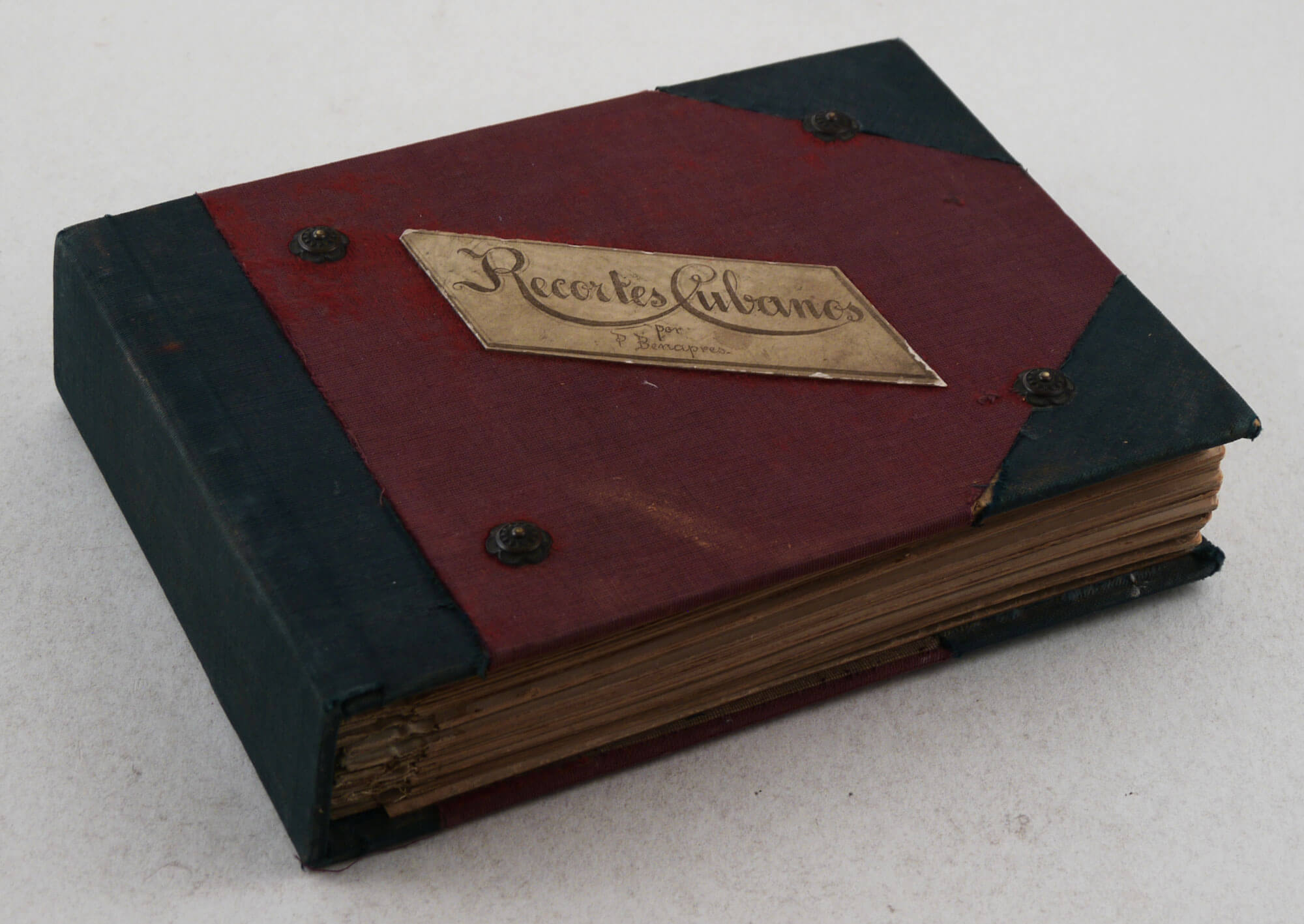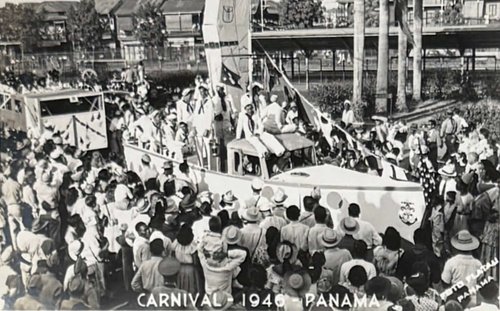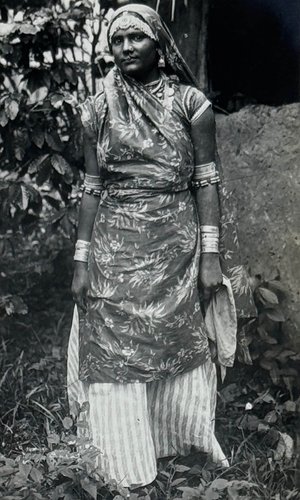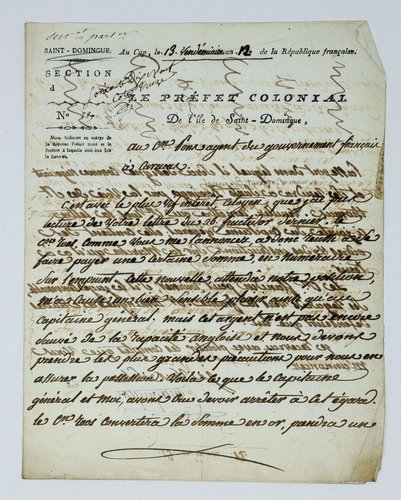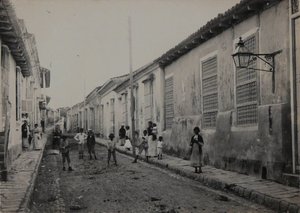
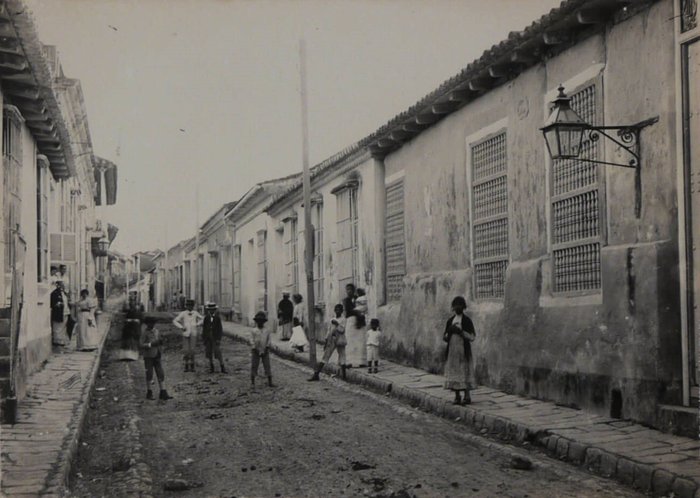
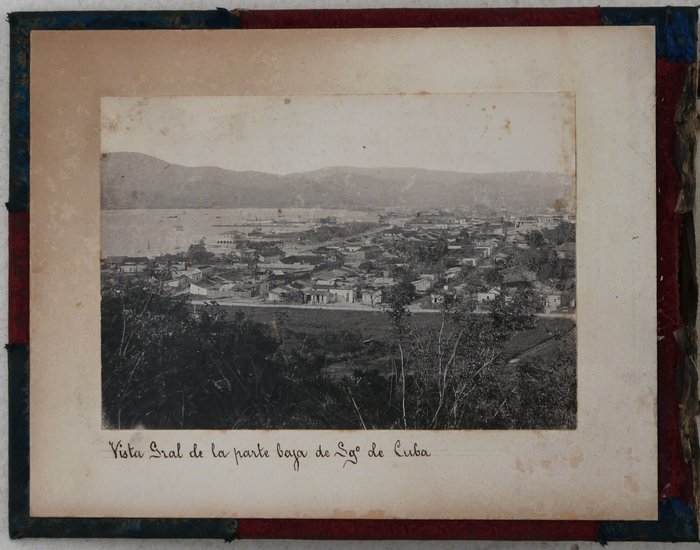

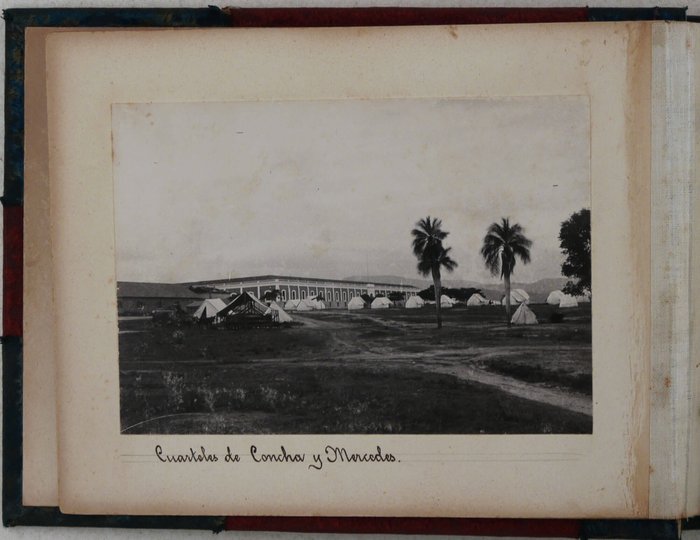
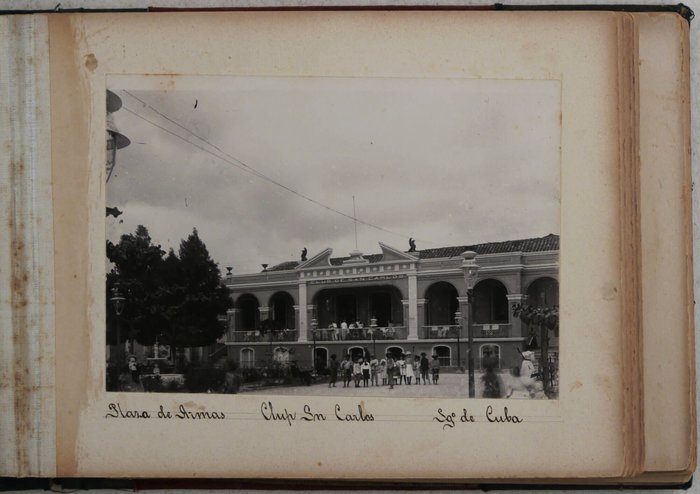
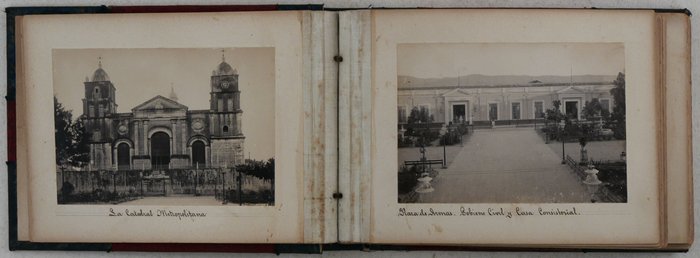
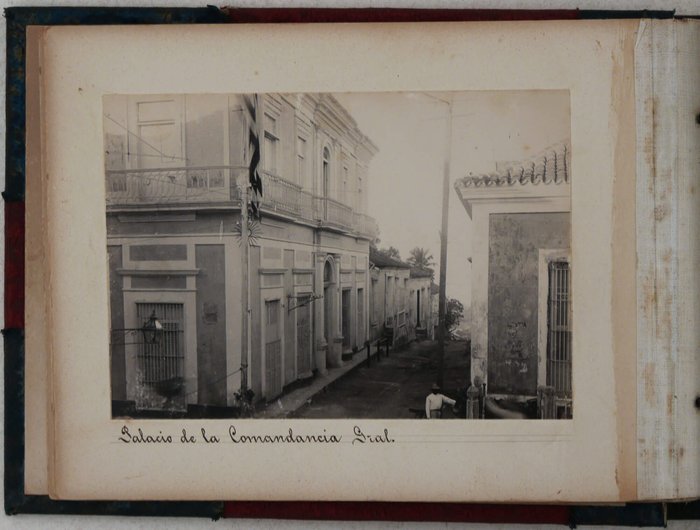
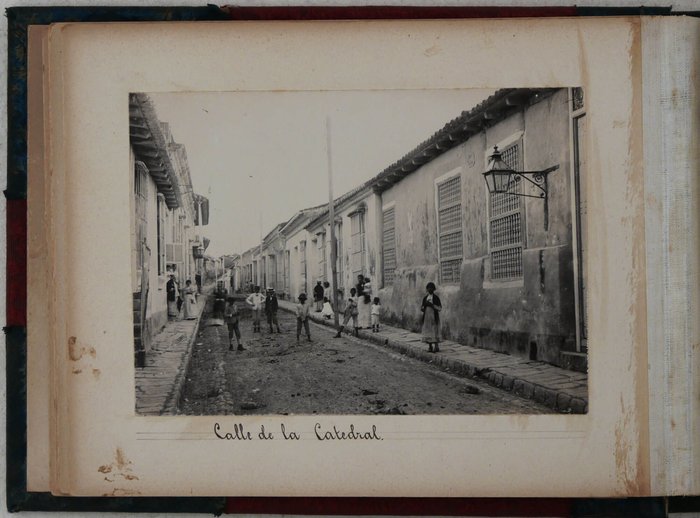
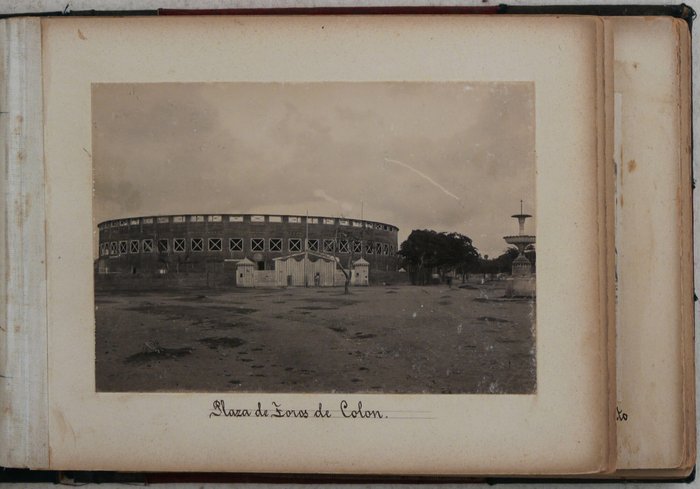
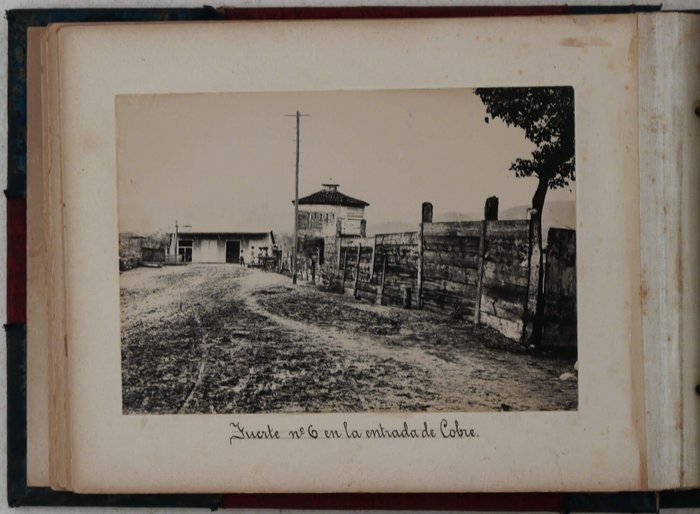

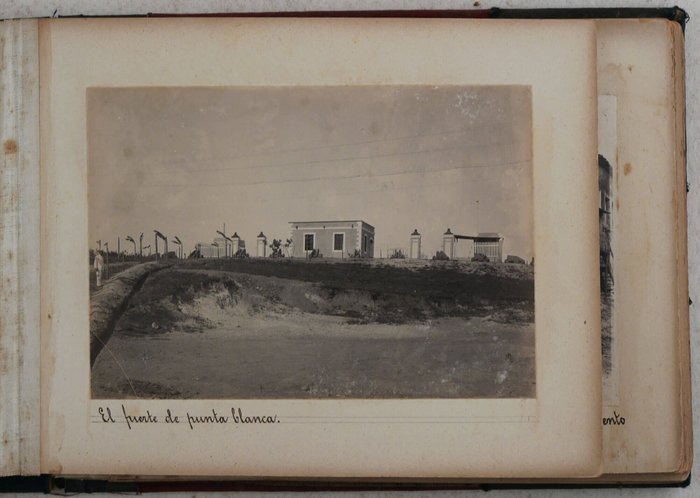
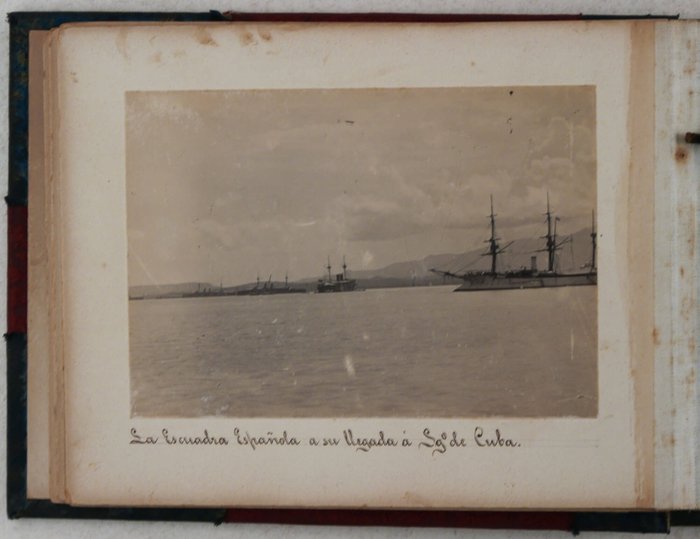
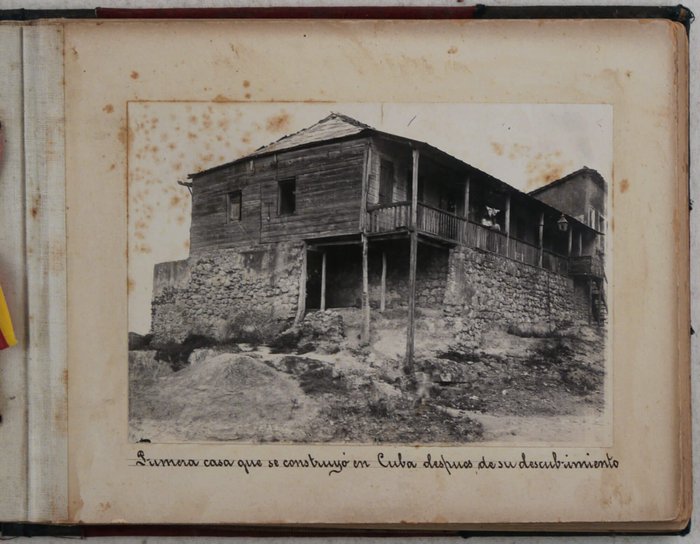

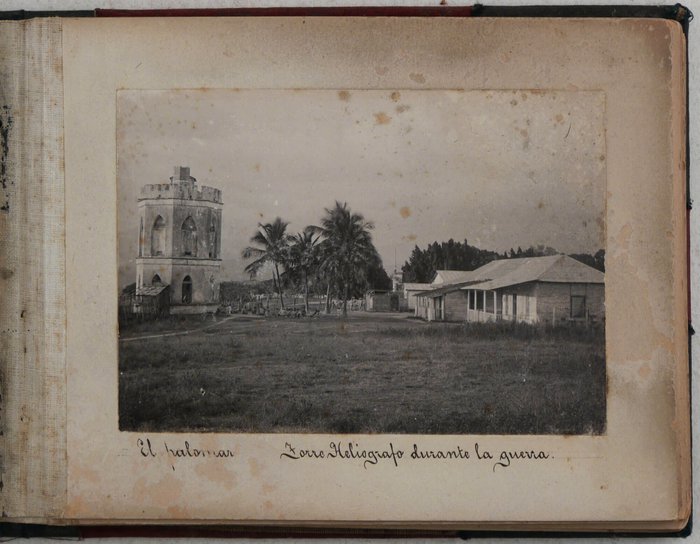

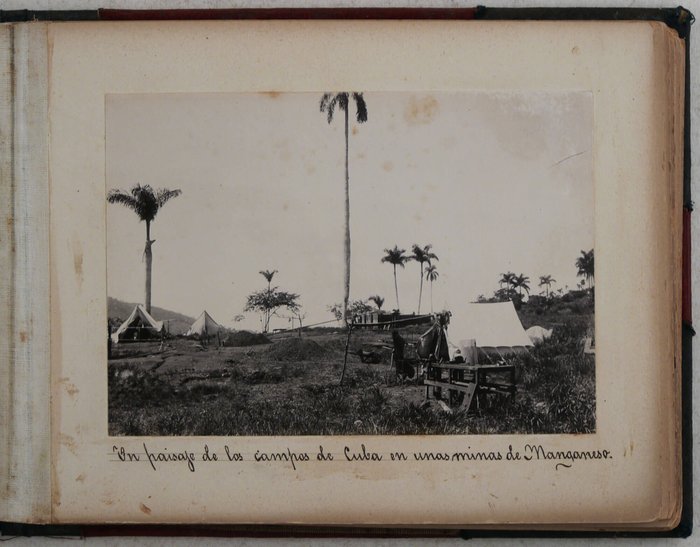
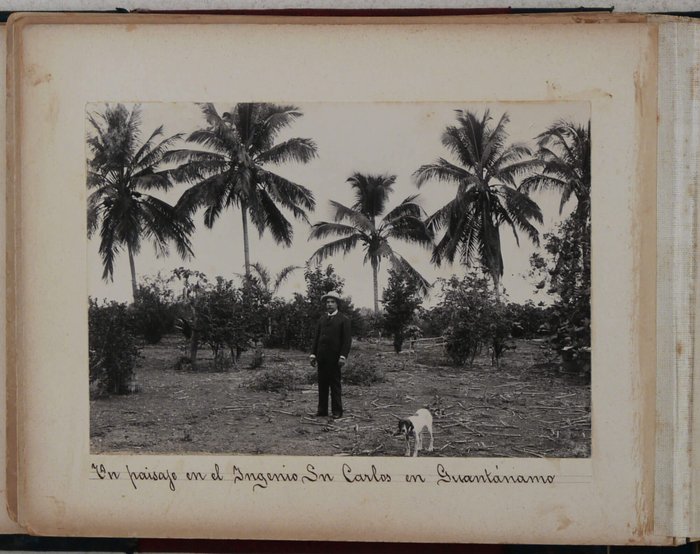
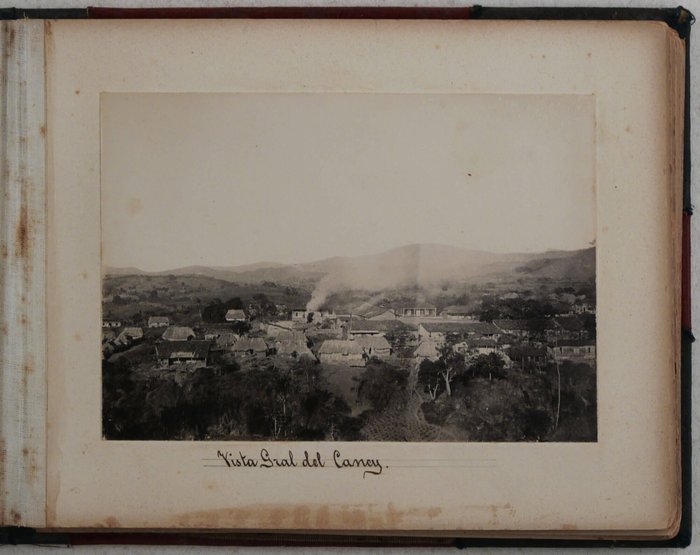
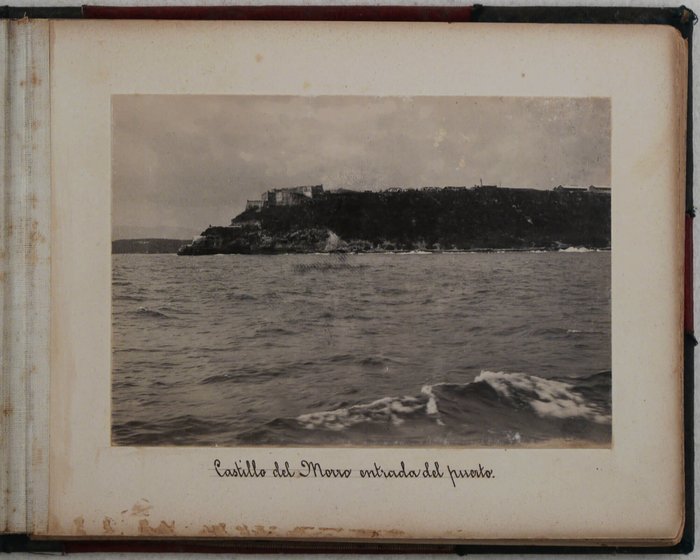
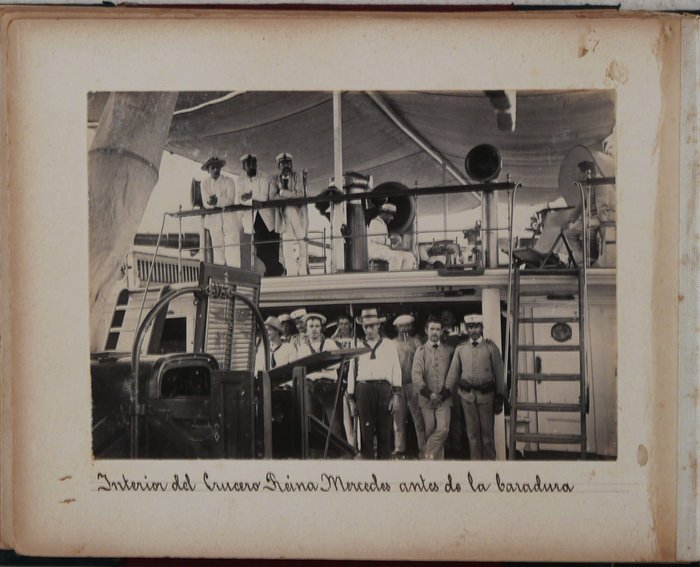
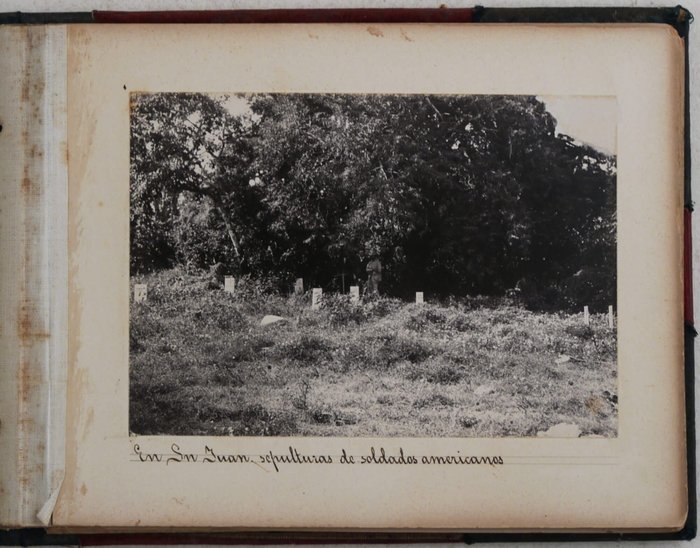
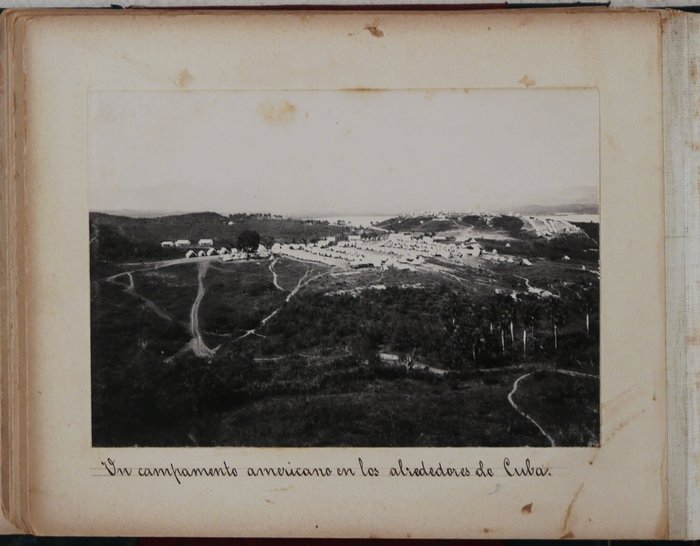
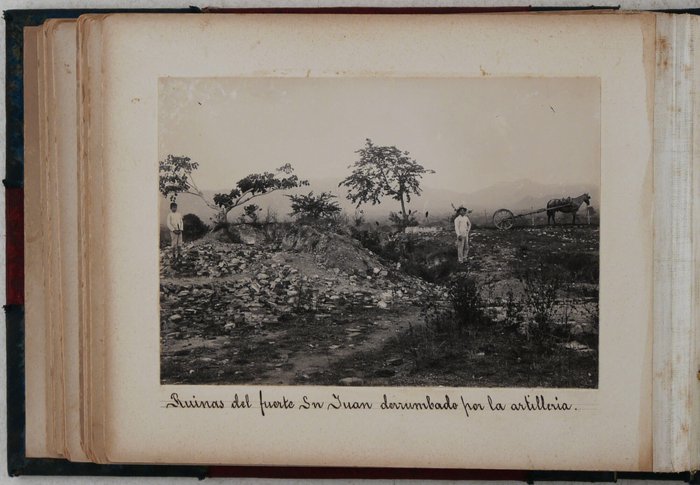
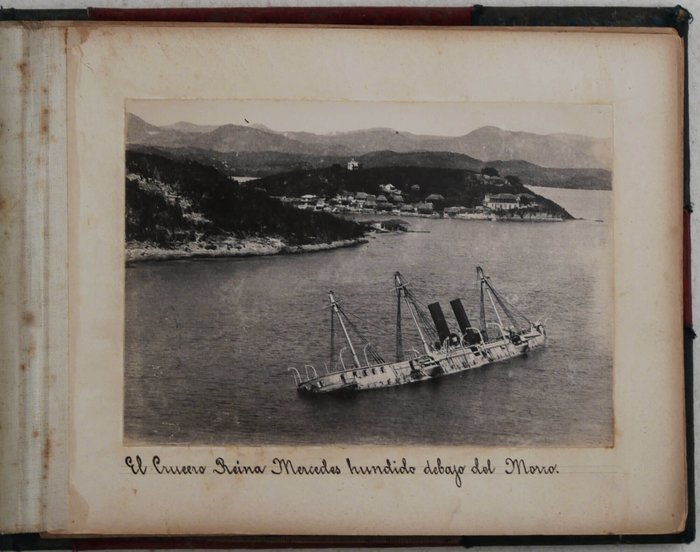
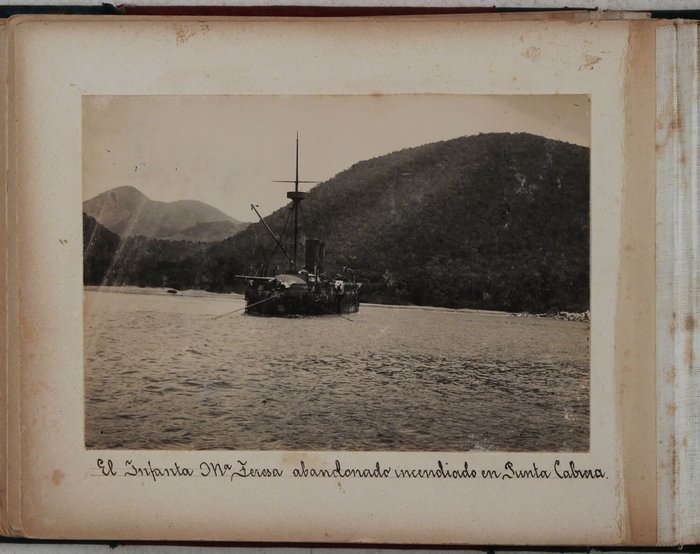

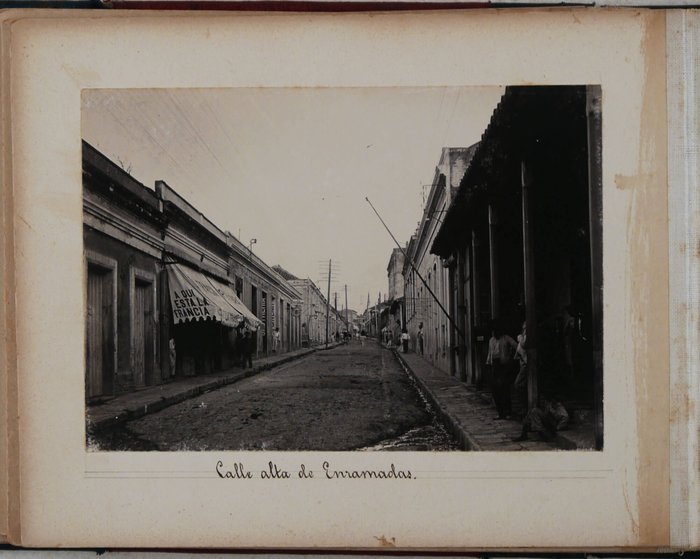
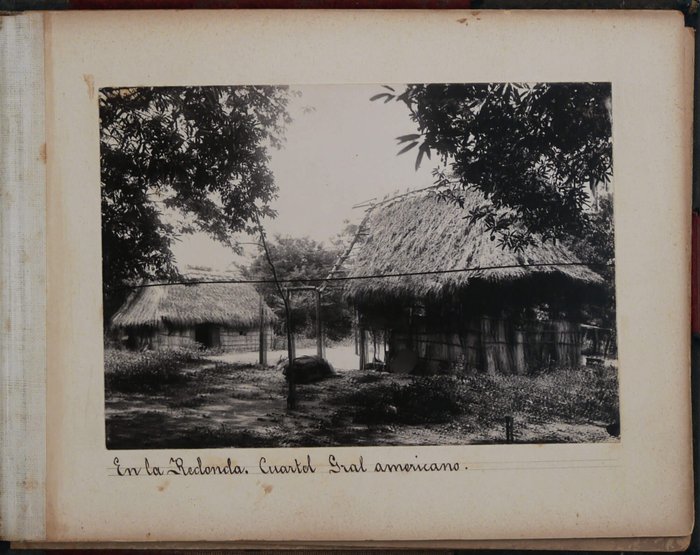
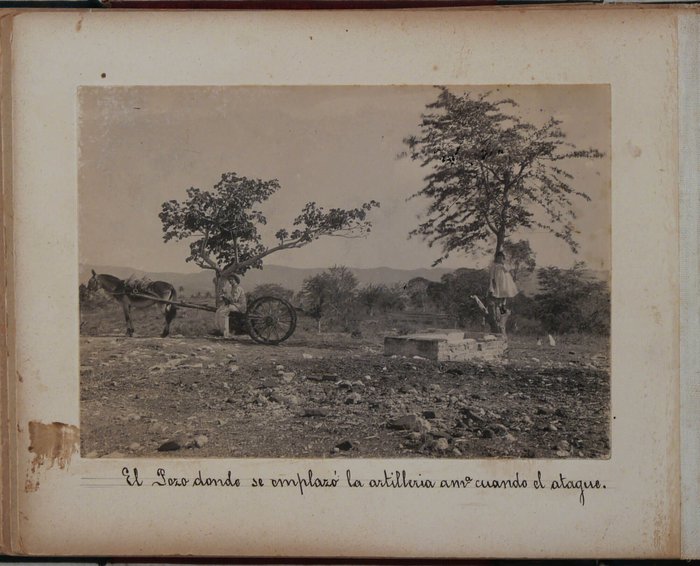
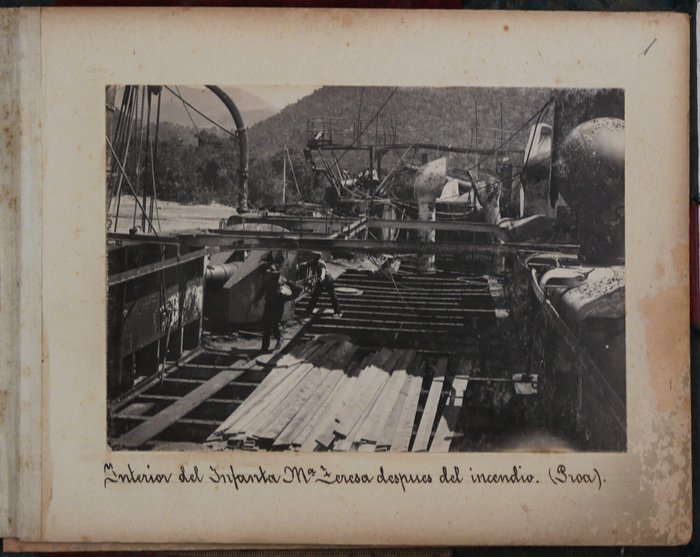
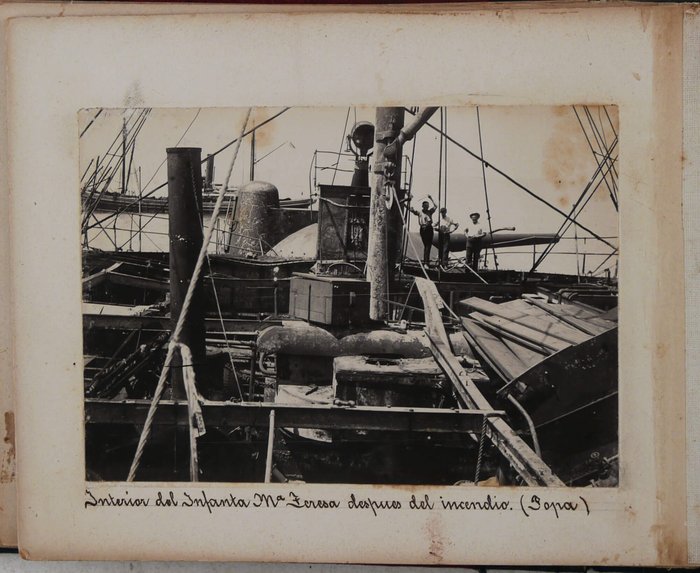
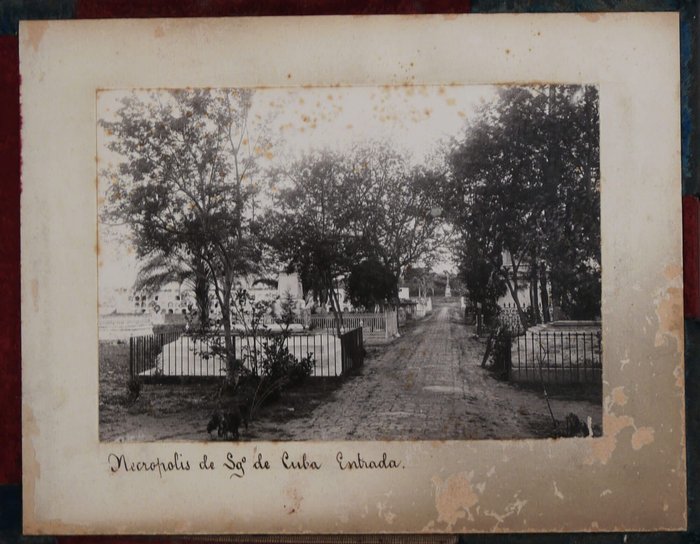
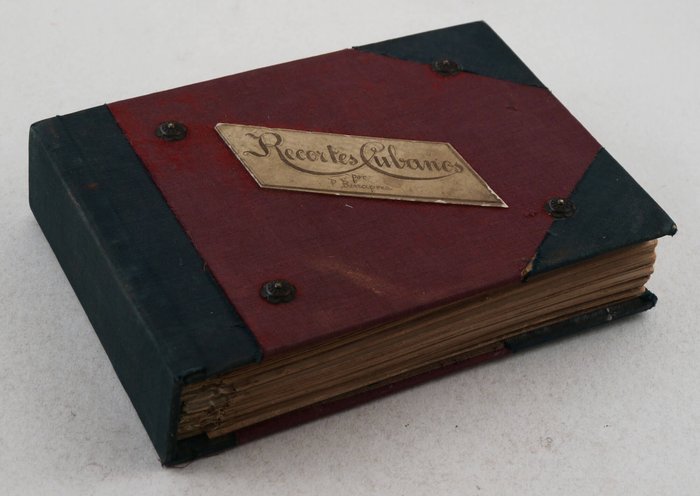
#PD51
Ca. 1898 – early 1900s
Oblong Quarto album (ca. 19x25,5 cm or 7 ½ x 10 in). 18 card stock leaves. With 38 mounted original gelatin silver photos, each ca. 12x17 cm (4 ¾ x 6 ¾ in). All photos with period brown ink manuscript captions in Spanish on the mounts. Period full cloth album with blue spine and corners and red boards; front board with a mounted photograph cutting with the title and the photographer’s name. Binding rubbed on extremities, occasional staining and foxing on the mounts and photos, a couple of photos mildly faded, but overall a very good album of strong rare interesting photos.
Historically significant collection of early original photos of Santiago de Cuba, focusing on the events and the aftermath of the siege of the city by the American troops and naval ships during the Spanish-American War (April 21 – December 10, 1898). The Battle of Santiago de Cuba (June-July, 1898) was the main military and naval engagement between the Spanish and American forces in Cuba and ended with the destruction of the Spanish fleet under the command of Admiral Pascual Cervera (four armoured cruisers, including flagship “Infanta Maria Teresa,” and two torpedo boat destroyers), American victory in the battles near the fortified village of El Caney and on the San Juan Ridge and the surrender of Santiago de Cuba on July 3. Following the peace Treaty of Paris (December 10, 1898), Cuba became an American protectorate administered by the the military government. The Republic of Cuba, whose politics were controlled by the United States, was established in 1902 and existed until the victory of the Cuban Revolution in 1959.
According to the album’s title, the photographs, dating back to the war period and the first years after, were taken by “P. Benapres” – most likely “D. Pablo Benapres” from Santiago de Cuba, who possibly was a Spaniard. His photos of the official proclamation of the Republic of Cuba were published in the popular Barcelona magazine, “La Ilustracion Artistica,” in 1902 (see more: La Ilustracion Artistica. Barcelona, 30 de junio de 1902. Num. 1070. P. 431).
The photos related to the events and sites of the Battle of Santiago de Cuba include several views of American military tent camps (near Valle de Manganeso Mine, in the Cuban countryside, “En la Redonda, Cuartel Gral. Americano,”); photos of San Juan Hill (American graves; bank of the San Juan River “where the attack began,” ruins of the fort destroyed by the artillery); El Caney village (general view, ruins of the “famous El Viso” fortification); military barracks and tents “de Concha y Mercedes;” main military hospital with a waving American flag; Fort No. 6 near El Cobre town; El Palomar or “heliographic” tower, which served as a garrison for Spanish troops; ruins of “El Pozo, [where the American artillery was placed during the attack];” and others.
Very interesting are the images of the “[Spanish naval squadron on its arrival to Santiago de Cuba],” two views of the Spanish coastal defence cruiser “Reina Mercedes” (group portrait of the officers and crew on the ship’s bridge and a photo of the ship sunk in Santiago de Cuba bay); and three photos of the Spanish flagship “Infanta Maria Teresa,” which burned and sank near Punta Cabrera (the exterior and two close-up views of the upper deck with the signs of fire and destruction).
There are also excellent photos of the city of Santiago de Cuba: a general view with the harbour, images of Plaza del Armas with the building of “Club de San Carlos,” Metropolitan Cathedral, building of the civil administration, “Palacio de la Comandancia Gral.” with American flag, Iglesia de Nuestra Señora de los Dolores (burned in 1970 and then restored), Calle de la Catedral, Plaza de Toros (bullfighting arena), square and church of St. Thomas, church of St. Ana, the entrance to the Punta Blanca harbour, the first house built in Santiago de Cuba, market place and “Calle del Hospital,” old Entramadas street, El Morro castle, two views of the city cemetery (the entrance and the mausoleum of Carlos Manuel de Céspedes (1868-1898)). An interesting portrait depicts “en Ingenio Sn. Carlos en Guantanamo.”
Overall an important collection of early original photos, illustrating the events of the Battle of Santiago de Cuba during the Spanish-American War.

